
About UsThe Numismatic Bibliomania Society is a non-profit organization devoted to the study and enjoyment of numismatic literature. For more information please see our web site at coinbooks.org SubscriptionsThose wishing to become new E-Sylum subscribers (or wishing to Unsubscribe) can go to the following web page link MembershipThere is a membership application available on the web site Membership Application To join, print the application and return it with your check to the address printed on the application. Membership is only $20 to addresses in the U.S., $25 for First Class mail, and $30 elsewhere. For those without web access, write to: David M. Sundman, Treasurer
AsylumFor Asylum mailing address changes and other membership questions, contact David at this email address: dsundman@LittletonCoin.com SubmissionsTo submit items for publication in The E-Sylum, just Reply to this message, or write to the Editor at this address: whomren@gmail.com BUY THE BOOK BEFORE THE COIN |
- WAYNE'S WORDS: THE E-SYLUM AUGUST 23, 2015
- CATALOG CORRECTION: THE AMERICAN ACCOMPTANT
- NEW BOOK: 2015 CANADIAN NUMISMATIC RESEARCH SOCIETY TRANSACTIONS
- NEW BOOKS: FESTSCHRIFTS FOR DEMETRIADI AND WITSCHONKE
- BOOK REVIEW: 2016 DELUXE EDITION RED BOOK
- BOOK REVIEW: SYMBOLS OF POWER
- BOOK REVIEW: FESTSCHRIFT OF WOLFGANG HAHN
- NNP SEEKS MISSING COUNTERFEITING REPORT VOLUME
- GOVERNMENT TO RETURN SEIZED LIBERTY DOLLARS
- A NEW RULING IN THE CENTRAL AMERICA CASE
- NOTES FROM E-SYLUM READERS: AUGUST 23, 2015
- DAVID LANGE AND THE NUMISMATIST
- 2015 ANA SHOW NUMISMATIC LITERATURE EXHIBITS
- CBS INTERVIEWS MINT SCULPTOR-ENGRAVER DON EVERHART
- U.S. COINS WITH SHADY BACKSTORIES
- WILLIAM WEEKS AND HIS 1839 LARGE CENTS
- HANNES TULVING JR. PLEADS GUILTY TO WIRE FRAUD
- MORE ON AUTHOR BILL ANTON, JR.
- MORE ON THE 2015 ANA WORLD'S FAIR OF MONEY
- WAYNE'S NUMISMATIC DIARY: AUGUST 23, 2015
- PAUL WITHERS ON NUMISMATIC WRITING
- OTTOMAN-ERA COIN CACHE SEIZED IN ISTANBUL
- THE CASE FOR BUYING ANTIQUITIES TO SAVE THEM
- SELECTIONS FROM EARLY AMERICAN AUGUST 2015 SALE
- HOW LOVE TOKEN ENGRAVING STYLES CHANGED
- HAS LEGENDARY NAZI GHOST TRAIN BEEN FOUND?
- NUMISMATIC MENTORS
- A RUSSIAN ALTERNATIVE CURRENCY
- BRITISH MUSEUM: THE HOUSE OF MEMORIES APP
- 1820 PATTERN FIVE POUNDS GOLD COIN
- GUY CIFRE AND NUMISTORIA
- PERTH MINT COIN ENGRAVER CLAIRE ROWSON
- COINS RETURNING TO ZIMBABWE
- COUNTERSTAMPED HALF COMMEMORATES POPE FRANCIS VISIT
- THAILAND ISSUES NEW 1,000 BAHT BANKNOTE
- WOMEN ON U.S. PAPER MONEY: LUCY PICKENS
- SHILLING REWARD FOR OLDEST MESSAGE IN A BOTTLE
- HE SELLS SEYCHELLES BANKNOTE SEX SECRET
- FEATURED WEB SITE: FEDERAL RESERVE ARCHIVE
Click here to access the complete archive
To comment or submit articles, reply to whomren@gmail.com
WAYNE'S WORDS: THE E-SYLUM AUGUST 23, 2015

New subscribers this week include: Robert Manley of Washington University in St. Louis, courtesy of Len Augsburger; Alexander Basok, courtesy of Phil Carrigan, and Ronachai Krisadaolarn, courtesy of Howard Daniel. Welcome aboard! We now have 1,862 subscribers.
This week we open with an update on his upcoming sale from Charlie Davis, three new numismatic books and three reviews. Other topics include new rulings in the Liberty Dollar and S.S. Central America cases, numismatic literature exhibits, Lucy Pickens, William Weeks, Hannes Tulving and Bill Anton, coin engravers Claire Rowson and Don Everhart, an alternative currency in Russia, and the case for buying antiquities to save them.
To learn more about The American Accomptant, ten coins that changed the world, potato chip proof coins, coins found at Jamestown settlement, Charles Steigerwalt publications, numismatic mentors, The Banknote Yearbook, gun money, Love Token engraving styles, and jetons of Hans Krauwinckel II, read on. Have a great week, everyone!
Wayne Homren
Editor, The E-Sylum
CATALOG CORRECTION: THE AMERICAN ACCOMPTANT
Writing about his upcoming September 12, 2015 sale, numismatic literature dealer Charlie Davis writes:
Please note a typo in the catalogue for Lot 335 Chauncey Lee The American Accomptant. The lot should be estimated at $1,250.00 but regrettably it shows in the printed catalogue as $150.00. It is correct in the on-line version.
335 CHAUNCEY LEE: The American Accomptant; Being a Plain, Practical and Systematic Compendium of Federal Arithmetic in Three Parts:
Designed for use in the Schools, and specially calculated for the Commercial Meridian of the United States of America, 1797, 297 (15)
pages, finely engraved frontis prepared by Abner Reed depicting a 1795 Eagle among other coins, 17½x10½ cm, original full calf scuffed,
front board detached, black spine label, internally clean. Very Good. (1,250.00)
Davis 609. The first appearance of the American Dollar sign in print.

To read the earlier E-Sylum article, see:
CHARLES DAVIS SALE CLOSES SEPTEMBER 12, 2015
(www.coinbooks.org/esylum_v18n30a03.html)
NEW BOOK: 2015 CANADIAN NUMISMATIC RESEARCH SOCIETY TRANSACTIONS
I'd like to make the readers of The E-Sylum aware of the Canadian Numismatic Research Society issue of the (New Series) Transactions Volume 3 for 2015. The contents include:
- A Guide for Contributors
- John Deyell, Orphans of the Storm – Money in Canada during the 1759-63 regime change
- Warren Baker, The Broke Coppers
- Paul Berry , Iliffe or Iliff, Which Witch is Which: Thomas Iliffe, His Family, Their Bakery and Bread Tokens 1849-1907
- Scott E Douglas , Dr. Thomas Barnardo and His Reclaimed Children
- Scott E Douglas , Afterword
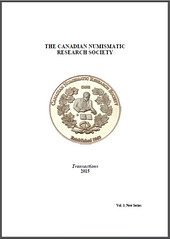 This year the Transactions is 90 pages, card covered and perfect bound. The orders have been coming in from word of mouth but notices will
be in the upcoming RCNA journal. Shortly after the orders are assembled, as in the past, the edition will be mailed and that will be that. We do not
plan on holding stock. This year $5 of each sale will be donated equally between the Canadian Association For Numismatic Education (CAFNE) and the J
D Ferguson Foundation.
This year the Transactions is 90 pages, card covered and perfect bound. The orders have been coming in from word of mouth but notices will
be in the upcoming RCNA journal. Shortly after the orders are assembled, as in the past, the edition will be mailed and that will be that. We do not
plan on holding stock. This year $5 of each sale will be donated equally between the Canadian Association For Numismatic Education (CAFNE) and the J
D Ferguson Foundation.
To order your copy please send a cheque or money order payable to Scott Douglas for:
Canadian addresses (postpaid): $40 in Canadian funds or United States addresses (postpaid): $40 in US funds to:
Scott Douglas
273 Mill St. East
Acton, Ontario, Canada
L7J 1J7
Questions? Email Scott Douglas – sdouglas333@gmail.com
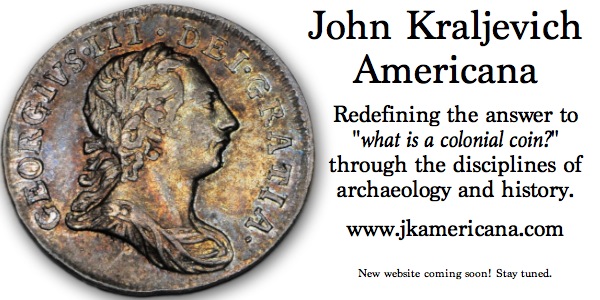
NEW BOOKS: FESTSCHRIFTS FOR DEMETRIADI AND WITSCHONKE
The ANS is now accepting pre-orders for two very limited, hand-numbered editions of books published in honor of Basil Demetriadi and of Rick Witschonke, which will ship at the end of September. Click each title to see the contents of each volume.
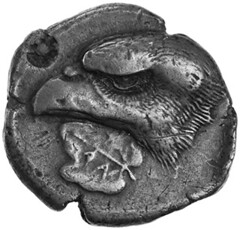 ΚΑΙΡΟΣ: Contributions to Numismatics in Honor of Basil Demetriadi, edited by Ute Wartenberg and Michel
Amandry, features 21 new, fully illustrated articles on ancient coins of the Greek world written specifically for this volume. The 428-page,
hardcover book is printed on heavyweight, archival paper, bound in Greek-blue linen, and handsomely slipcased, featuring a silver stamp of a stater
with eagle head and leaf.
ΚΑΙΡΟΣ: Contributions to Numismatics in Honor of Basil Demetriadi, edited by Ute Wartenberg and Michel
Amandry, features 21 new, fully illustrated articles on ancient coins of the Greek world written specifically for this volume. The 428-page,
hardcover book is printed on heavyweight, archival paper, bound in Greek-blue linen, and handsomely slipcased, featuring a silver stamp of a stater
with eagle head and leaf.
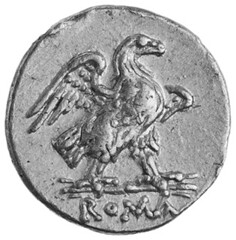 FIDES: Contributions to Numismatics in Honor of Richard B. Witschonke, edited by Peter G. van Alfen, Gilles Bransbourg, and Michel
Amandry, contains 20 articles of new scholarship on the ancient coinage of the Roman world and greater italic peninsula and islands. RBW’s volume is
520 pages with illustrations throughout, bound in Roman imperial purple linen, and stamped in gold with the image of a 60-as multiple depicting an
eagle above the word “ROMA”.
FIDES: Contributions to Numismatics in Honor of Richard B. Witschonke, edited by Peter G. van Alfen, Gilles Bransbourg, and Michel
Amandry, contains 20 articles of new scholarship on the ancient coinage of the Roman world and greater italic peninsula and islands. RBW’s volume is
520 pages with illustrations throughout, bound in Roman imperial purple linen, and stamped in gold with the image of a 60-as multiple depicting an
eagle above the word “ROMA”.
Only 150 copies of each book will be sold on a first-come, first-served basis, and will not be reprinted. Because of the extremely limited quantity, there is no dealer discount. One copy only per person/organization/business. You will receive at no extra charge the PDF e-book edition as soon as your order has shipped.
Demetriadi:
ANS Members: $115
Non-member price: $170
Witschonke:
ANS Members: $190
Regular Price: $ 275
Bundle (1 copy each of Demetriadi and Witschonke):
ANS Members: $275
Non-member price: $350
To order, please contact Catherine DiTuri at cdituri@numismatics.org, or 212-571-4470, ext. 117, or by clicking the links. Bundles may be ordered by phone or email only.
To order the Demetriadi book, see:
ΚΑΙΡΟΣ: Contributions to Numismatics in Honor of Basil
Demetriadi (http://numismatics.org/Store/BCD)
To order the Witschonke book, see:
FIDES: Contributions to Numismatics in Honor of Richard B. Witschonke
(http://numismatics.org/Store/RBW)
BOOK REVIEW: 2016 DELUXE EDITION RED BOOK
 When this reviewer was a beginning collector in 1949-1950, two books dominated the world of U.S. coins: The Standard Catalogue of United
States Coins by Wayte Raymond; and A Guide Book of United States Coins by R.S. Yeoman and Kenneth Bressett. The two titles were rivals in
the 1940’s but the ultimate winner was the Guide Book, universally known as the “Red Book,” published in Racine, WI.
When this reviewer was a beginning collector in 1949-1950, two books dominated the world of U.S. coins: The Standard Catalogue of United
States Coins by Wayte Raymond; and A Guide Book of United States Coins by R.S. Yeoman and Kenneth Bressett. The two titles were rivals in
the 1940’s but the ultimate winner was the Guide Book, universally known as the “Red Book,” published in Racine, WI.
Wayte Raymond was a numismatist and publisher of steely integrity and unbending conservatism, an elitist with little love for popular trends or shifting fashions in numismatics. His idea of book distribution was limited to a network of “established coin dealers” who generally shared his views of the coin market.
Whitman provided a dramatic contrast, notably as publisher of such nationally famous lines as the Little Golden Books that were distributed all over America through five- and ten-cent stores as well as booksellers. The new “Red Book” was instantly available to all through this ready-made national network. National distribution and availability propelled the new catalog into the front rank.
When Raymond died in 1956, his books faded from view and the “Red Book” and its slightly older cousin the “Blue Book” ruled the marketplace. By the time I joined the Coin World staff in early 1974 the “Red Book” was known to be a rigidly controlled publication, so tightly limited in page length that as new material was added, older information had to be compressed or eliminated to maintain the fixed page count.
The “Red Book” staff was essentially limited to R.S. Yeoman, Ken Bressett, Neil Shafer and Holland Wallace, who appeared from time to time in news photos posing primly in white shirts and ties. One bizarre interlude that might be called the book’s Wild West experience helped intensify the straight-jacketing process. In the late 1950’s, New York dealer John J. Ford Jr. began publishing exciting new discoveries in the field of western Americana, primarily unknown pioneer gold coins and ingots. He obligingly sent information about them to the “Red Book” despite his ownership of the rights to Raymond’s Standard Catalogue.
When vigorous controversy erupted over authenticity of many of Ford’s new discoveries, most of them were deleted from the “Red Book” for “further research” and never returned to its pages. The addition of new material was now even more rigorously policed in the wake of their disappearance.
The “Red Book” moved to New York City briefly with Saint Martin’s Press, then on to Atlanta and ownership by Anderson Publishing where it remains today. By the 1980’s, the ”Red Book” had become a flourishing collectible in its own right and in 2009 a volume appeared devoted to its study, A Guide Book of the Official Red Book of United States Coins by Frank J. Colletti.
By now the dramatic expansion of new U.S. Mint issues were making it impossible to continue the long-standing size limitations as new commemorative clad, silver and gold coins, Bicentennial and other circulating commemoratives such as Statehood quarters, gold and silver bullion coins gushed forth from the Mints in ever-increasing quantities.
Fighting back against widely distributed pricing newsletters and proliferating electronic publications, the publishers released paper back and ring binder editions, and launched a larger size Professional Edition of the “Red Book.” All of these innovations prepared the way for the new Deluxe Edition which many collectors first saw at the 2015 American Numismatic Association convention in suburban Rosemont, IL in August 2015.
Measuring 7 x 10 inches, 2½ inches thick, this impressive new paperback was nick-named “Mega Red” by admiring collectors and dealers. For courtesy’s sake, the name of the late R.S. Yeoman (1904-1988) graces the cover and title page, but the actual leadership is acknowledged as Senior Editor Kenneth Bressett, with Q. David Bowers and Jeff Garrett.
An idea of the enhanced scope of the new edition may be gained from the five full pages devoted merely to the table of contents. The listings for Colonial and early Federal issues reflect the vast strides that research into those collectibles has taken in recent years. The new edition clarifies not only what Colonials exist but why they exist as well.
Intricacies of grading receive full investigation for each denomination, both for classical series and the most modern additions to U.S. coinage with detailed photo images of the greatest precision.
The listings for early copper, half cents and large cents have been revolutionized by inclusion of varieties and valuation according to the published works of early copper giants including William H. Sheldon, Howard R. Newcomb, Walter Breen, Roger Cohen and others. Early silver and gold coin denominations are presented with similar completeness for the first time in a general U.S. catalog.
This wealth of important detail exceeds anything included in the earlier “Red Book” editions. The importance of this expansion of information can scarcely be over-emphasized. Pricing has been meticulously expanded grade by grade and by inclusion of selected auction records for the many great rarities that appear only occasionally on the numismatic market.
While U.S. Mint Uncirculated and Proof sets are familiar to most collectors and are included in complete detail, collectors may be amazed at the sheer volume of bullion coins released by the Mint including First Lady gold and platinum eagles that few collectors have ever actually handled.
A section on “Significant U.S. Patterns” provides a brief introduction to that fascinating area, while “Private and Territorial Gold” lists an array of Western issues regarded as legitimate today. Several categories of private tokens are examined including Hard Times and Civil War issues and Colorado’s Lesher Referendum dollars.
Coins of U.S. possessions covered in “Mega Red” include Hawaiian and Puerto Rican issues, with a very thorough examination of U.S. Philippine coins offering a examination of this long-neglected series of 1903-1945. The Philippine coinage could certainly profit from treatment in a separate volume if the Whitman series.
Among many appendices, the valuation list of past “Red Book” and “Blue Book” editions will attract reader interest, as will an exhaustive roster of “Top 250 U.S. Coin Prices Realized at Auction.” Sections on coin handling, cleaning and conservation, the operation of the market with its cycles and personal reminiscences of prominent numismatists round out this smorgasbord of the world of U.S. coins.
That this amazing book can be available at only $49.95 is a commentary on the efficiency of Whitman Publishing’s marketing. No dealer, private collector or library can afford top be without this indispensable volume.
To read the complete article, see:
2016 Guide Book
of United States Coins, Deluxe Edition
(/www.whitman.com/store/Inventory/Detail/2016-Guide-Book-of-United-States-Coins-Deluxe-Edition+0794843077)
To read the earlier E-Sylum article, see:
NEW BOOK: 2016 DELUXE EDITION RED BOOK
(www.coinbooks.org/esylum_v18n09a03.html)
BOOK REVIEW: SYMBOLS OF POWER
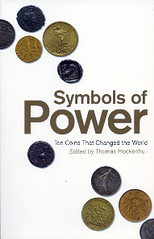 Thomas Hockenhull (ed.), Symbols of Power. Ten Coins That Changed the World. Columbia University Press, New York, 2015. 160 pages
with color illustrations. Paperback, 12.8 x 19.8 cm. ISBN: 978-0-231-17408-4. GBP 7.99.
Thomas Hockenhull (ed.), Symbols of Power. Ten Coins That Changed the World. Columbia University Press, New York, 2015. 160 pages
with color illustrations. Paperback, 12.8 x 19.8 cm. ISBN: 978-0-231-17408-4. GBP 7.99.
One thing is certain: This book does not attempt to give a full account of the history of money or global economy. Instead, it takes the reader on a trip through time and across the world.
The short general introduction is followed up by the thematic chapters, each of them dealing with one of the following ten coins: the shekel, the drachma, the denarius, the florin, the franc, the mark, the rupee, the yen, the pound, and the dollar. When browsing through the book, the reader quickly acknowledges that these coins indeed changed the world. There is hardly any territory or era that is not touched upon. On the other hand, some important currencies are missing, which leaves some white spots on the map of history: neither China nor Russia is referred to. As was said before, however, the authors make no claim of their book being complete.
This book has been written in the best British and hence entertaining manner. It provides a marvelous introduction to the history of money as the interface between the object-oriented numismatics on the one hand and the theoretical economic history on the other hand.
Fortunately, the authors do not rigidly restrict themselves to only one “coin” at a time. The chapter on the Roman denarius, for instance, likewise mentions this coin’s fractions as well as other denominations, and hence paints a more comprehensive picture of the history of Roman money.
Unfortunately, however, choosing certain “coins” also leads to a lack of clarity. Take the shekel, for example. We learn that, long before coins have been introduced ca. 3000 BC, the shekel had been a unit of weight that was later used for fixing prices. The first silver coins were thus called shekel in the Near East – given their weight was one shekel. This ancient currency ceased to exist in the 2nd cent. AD but experienced a Renaissance in the 20th century. In 1980, Israel replaced the Israel pound with the new shekel. But which elements does this new modern currency share with the old one, except for the name? The same question arises when we look at Greece and the drachma.
The chapters are not actually devoted to currencies but coins therefore. What is the basis for ancient and modern coins with the same name yet completely different characteristics being part of one and the same category? In the end, this is an idle question at this point. One might also criticize that the thaler did not receive a chapter of its own but is referred to in some short remarks on the background of the dollar only.
With its high information density and its entertaining style the book proves that a topic can be addressed in a much clearer and more informative way if it is not subject to too rigid a definition. This approach is much more common in Great Britain than it is in Germany.
A fact that can be lamented, though, is that the authors are not linked to the individual chapters. So we would like to thank them all for the beautiful book they have presented us with.
To read the complete article, see:
Coins as symbols of power (www.coinsweekly.com/en/News/4?&id=3602)
BOOK REVIEW: FESTSCHRIFT OF WOLFGANG HAHN
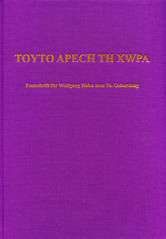 TOYTO APECH TH XWPA. Festschrift für Wolfgang Hahn, edited by Wolfgang Szaivert, Nikolaus Schindel, Michael Beckers and Klaus
Vondrovec. Vienna 2015. Verlag Österreichische Forschungsgesellschaft für Numismatik. c/o Institut für Numismatik und Geldgeschichte / Universität
Wien. 528 pages, illustrations throughout. 21 x 29.7 cm. ISBN 978-3-9501987-5-10. 69 euros, postage extra.
TOYTO APECH TH XWPA. Festschrift für Wolfgang Hahn, edited by Wolfgang Szaivert, Nikolaus Schindel, Michael Beckers and Klaus
Vondrovec. Vienna 2015. Verlag Österreichische Forschungsgesellschaft für Numismatik. c/o Institut für Numismatik und Geldgeschichte / Universität
Wien. 528 pages, illustrations throughout. 21 x 29.7 cm. ISBN 978-3-9501987-5-10. 69 euros, postage extra.
The oeuvre that Wolfgang Hahn has produced over the course of the last 45 years is amazing. His list of publications spans 25 pages. The thematic range covers Roman coin finds (his 1969 PhD thesis dealing with the coin finds of Carnuntum, for example), coinages from Bavaria and Byzantium as well as medals and Austrian coins. But if you want to know what the true passion of coin aficionado Wolfgang Hahn is, then you should take a look at the cover illustration of his Festschrift. It does not depict a distinguished academic, sitting in his library, surrounded by books. Instead, it shows Professor Hahn as an Ethiopian Memher with all the office’s insignia. This title is equally as mysterious – not even Google gives a proper definition – as the coinage of Axum has been until a few decades ago, at least before Wolfgang Hahn has devoted many articles to this topic.
The papers contributed to the Festschrift of Wolfgang Hahn by his numismatic friends are equally as wide-ranging as his own research. The range of topics includes the history of research (the post-1945 coin trade in Austria), Greek, Sassanid, Roman and Byzantine numismatics as well as medieval times in Bavaria and Austria. Of course, the several articles on medallic art deserve mentioning here as well, such as a phenomenon that is relatively unknown: the Damen- or Ballspende (ladies’ gift or ball’s gift) as a typical Viennese custom. To honor the attendance of the ladies at a ball, they were presented with small gifts, such as a medal.
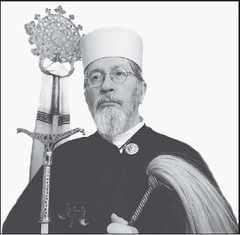 It is a pleasure to read the Festschrift in honor of Wolfgang Hahn (only the illustrations of the coins could have been a little bit richer
in contrast). Covering such vast a spectrum, it is the perfect honor for a man which one author calls a polymath. How many numismatists of our time
can allow themselves to transcend the boundaries of historical periods in such a sovereign manner? To illustrate the extent of the sovereignty of
this grand master of numismatics, we take the liberty of showing the picture with which the well-wishers have preceded the volume.
It is a pleasure to read the Festschrift in honor of Wolfgang Hahn (only the illustrations of the coins could have been a little bit richer
in contrast). Covering such vast a spectrum, it is the perfect honor for a man which one author calls a polymath. How many numismatists of our time
can allow themselves to transcend the boundaries of historical periods in such a sovereign manner? To illustrate the extent of the sovereignty of
this grand master of numismatics, we take the liberty of showing the picture with which the well-wishers have preceded the volume.
CoinsWeekly congratulates Wolfgang Hahn, not only on his 70th anniversary, but also on the great number of numismatic friends and talented pupils he has acquired during the time of his career!
To read the complete article, see:
Festschrift celebrating the 70th anniversary of Wolfgang Hahn
(www.coinsweekly.com/en/News/4?&id=3601)
NNP SEEKS MISSING COUNTERFEITING REPORT VOLUME
 In 1969, Eric Newman purchased a run of reports issued by the Association of Banks for the Suppression of Counterfeiting. Only the eighth
volume was missing, and today the Newman Numismatic Portal (NNP) seeks a copy for scanning purposes. Would any readers be willing to loan a copy? The
volume is not present in the American Numismatic Society, and the sole copy identified by worldcat.org is in the New-York Historical Society
library.
In 1969, Eric Newman purchased a run of reports issued by the Association of Banks for the Suppression of Counterfeiting. Only the eighth
volume was missing, and today the Newman Numismatic Portal (NNP) seeks a copy for scanning purposes. Would any readers be willing to loan a copy? The
volume is not present in the American Numismatic Society, and the sole copy identified by worldcat.org is in the New-York Historical Society
library.
NNP has already scanned Newman's extensive collection of counterfeit detectors and bank note reporters, which may be viewed at https://archive.org/details/newmannumismatic. If you can help, please contact Len Augsburger, NNP project coordinator, at leonard.augsburger@wustl.edu.

http://www.newmannumismaticportal.com/beta/
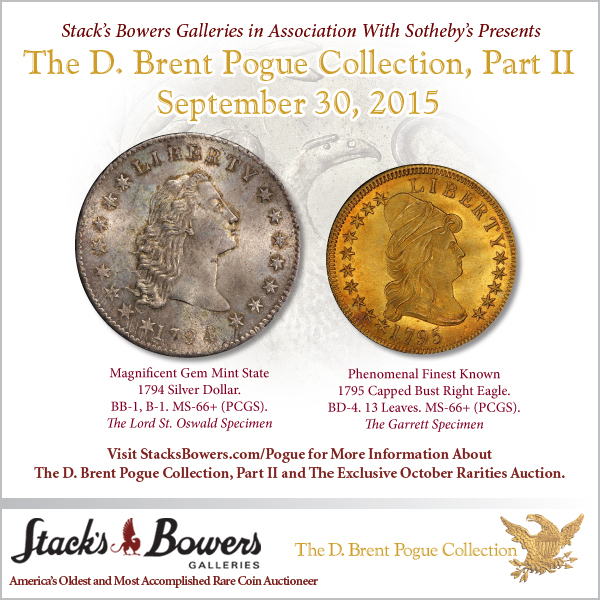
GOVERNMENT TO RETURN SEIZED LIBERTY DOLLARS
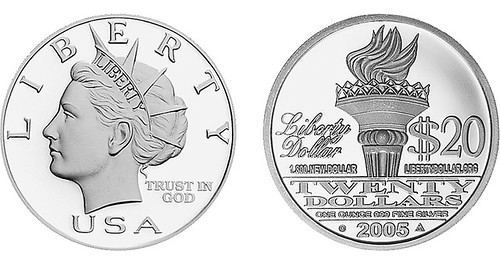
Millions of dollars' worth of silver, gold, platinum and copper Liberty Dollar medallions and related property seized by federal authorities in 2007 will be returned to their owners, according to court documents.
The return of that property, however, is being delayed until all petitions filed seeking return of the property have been completely processed and any appeals finalized.
In documents filed Aug. 14 in U.S. District Court for the Western District of North Carolina in Statesville by Acting U.S. Attorney Jill Westemoreland Rose, 265 of the 302 petitions filed for the return of property were approved.
The court documents indicate the government is willing to settle 27 petitions in part. Seven petitions have been denied, four are in question and one petition is to be refiled.
Despite the 2011 conviction of Liberty Dollar creator Bernard von NotHaus on charges related to the manufacture and distribution of Liberty Dollars, U.S. District Court Judge Richard L. Voorhees ruled in late 2014 that seized property not deemed as contraband should be returned pursuant to ownership claims.
Von NotHaus, who faced 22 years in prison for his 2011 conviction, was sentenced Dec. 2, 2014, by Judge Voorhees to three years of probation and six months under house arrest.
Von NotHaus introduced the Liberty Dollar in 1998, marketing the pieces using NORFED, the National Organization for the Repeal of the Federal Reserve and the Internal Revenue Code. The organization touted Liberty Dollars as an alternative to Federal Reserve notes, and sought to develop a network of merchants that would accept them in lieu of Federal Reserve notes.
To read the complete article, see:
Federal
government to return millions of dollars in Liberty Dollars seized by authorities in 2007
(www.coinworld.com/news/precious-metals/2015/08/federal-government-to-return-millions-in-liberty-dollars-.html#)
To read earlier E-Sylum articles, see:
IN DEFENSE OF THE LIBERTY DOLLAR (www.coinbooks.org/esylum_v08n52a20.html)
LIBERTY DOLLAR FIRM REBRANDED AS LIBERTY NUMISMATICS
(www.coinbooks.org/esylum_v10n52a17.html)
LIBERTY DOLLAR FOUNDER VON NOTHAUS AWAITS HIS FATE
(www.coinbooks.org/esylum_v15n45a11.html)
LIBERTY DOLLAR CREATOR TO BE SENTENCED
(www.coinbooks.org/esylum_v17n47a27.html)
A NEW RULING IN THE CENTRAL AMERICA CASE
Treasure hunters who found the long-lost wreck of the SS Central America cannot claim "finders keepers" for the ship's $300 million bounty of 19th century gold, a federal judge ruled.
The sidewheel steamer sank in a hurricane off the coast of the Carolinas in September 1857, carrying 9.1 tons of gold, 477 passengers and 101 crew members. The ship plied the waters from Central America to New York and was carrying gold from the California Gold Rush when it went down. Loss of the enormous shipment contributed to the financial panic of 1857.
Columbus-America Discovery Group found the wreckage of the "Ship of Gold" in 1989. The Central America and her booty, believed to be worth $300 million or more in today's market, have been the subject of legal turmoil ever since.
After the discovery and initial haul, Recovery Limited hired deep-sea experts Odyssey Marine Exploration group to continue excavating the Central America. More gold and artifacts were recovered, including an 80-pound gold ingot that sold for $8 million.
But U.S. District Judge Rebecca Beach Smith on Aug. 11 denied Recovery Limited title to the wreck, finding that salvage rights preclude the maritime law of finds, which was intended for naturally occurring valuables, such as ambergris and whales.
"A free finders-keepers policy is but a short step from active piracy and pillaging," Smith wrote. "Were this court to allow Recovery Limited Partnership, the current salvor-in-possession, to enjoy immediate title to the artifacts it has recovered since early 2014, then the court would risk an 'unsupervised rush to the site to recover anything that could be grabbed.' The public interest in historic shipwrecks would be diminished, if such an 'unsupervised rush' to sunken treasure were to result."
Neither Ira O. Kane, the court-appointed receiver for Recovery Limited nor Odyssey Marine Exploration responded to requests for comment.
To read the complete article, see:
No 'Finders Keepers' for Shipwreck
Gold (www.courthousenews.com/2015/08/18/no-finders-keepers-for-shipwreck-gold.htm)
NOTES FROM E-SYLUM READERS: AUGUST 23, 2015
A Note from Harry Cabluck
Harry Cabluck writes:
I enjoyed, even more than usual, your latest E-Sylum (Volume 18, Number 33, August 16, 2015). You make the reader feel as if he were alongside you in Chicago.
FYI, I was able to purchase a few books from the John Huffman Library sold by Second Story Books, thanks to the ad posted in The E-Sylum. The book selections from the Huffman library are superb, and a pleasure to peruse.
I also always enjoy poring through the Kolbe & Fanning site as well, and have made several selections from their offerings. The E-Sylum makes it easy to locate them.
The Potato Chip Proofs
Tom DeLorey writes:
The article on the new and improved proof set packaging machine mentions that it replaces a system installed in 1999. FWIW, back in 1999 I was working at Harlan J. Berk's in Chicago, and we ordered a lot of the sets because of the interest in the Statehood quarters which debuted that year.
When we checked our first order, we discovered that most of the cents had a ring-shaped discoloration on the center of the reverse. I surmised that some sort of suction device was being used to pick up the coins to place them in holders, and that the tube or whatever was leaving a residue on the coins which discolored them after they had passed inspection. I tried to ask the Mint about it, but as usual received no response to my inquiries. Eventually the problem went away.
Some time after I started working at ANACS in 1978, John Hunter there told me a story about a VIP tour of the San Francisco Mint he had taken not long before. He and his guide had gone into the proof set packaging area, where sets were still being assembled by hand. The guide had pointed out how all the workers were gowned, with hair caps and gloves to protect the coins, when suddenly they came upon a worker who was, between sets, sticking her gloved hand into a bag of potato chips and shoving them into her mouth! She then used the same hand to assemble the next set before her. John said that the guide almost exploded before they quickly left the area.
To read the earlier E-Sylum article, see:
ROBOTS INVADE SAN FRANCISCO MINT (www.coinbooks.org/esylum_v18n33a13.html)
The Origin of 'Leopold the Hogmouth'
Dave Alexander writes:
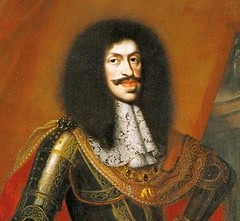 Kudos to Bob Leonard for his exploration of "Leopold the Hogmouth." This is undoubtedly one of the dumbest and most disrespectful
soubriquets ever dreamed up for any ruler of the illustrious House of Habsburg. When I was a much younger collector I read somewhere that the
nickname was concocted by Edouard Frossard to spice up the innumerable billon 20 kreuzer coins and silver thalers of this ruler. Use of such a term
during Leopold's reign would have brought dire consequences! After all, as recently as the 1890's a German citizen was jailed for publicly
referring to Kaiser Wilhelm II as "Windbeutel," Windbag!
Kudos to Bob Leonard for his exploration of "Leopold the Hogmouth." This is undoubtedly one of the dumbest and most disrespectful
soubriquets ever dreamed up for any ruler of the illustrious House of Habsburg. When I was a much younger collector I read somewhere that the
nickname was concocted by Edouard Frossard to spice up the innumerable billon 20 kreuzer coins and silver thalers of this ruler. Use of such a term
during Leopold's reign would have brought dire consequences! After all, as recently as the 1890's a German citizen was jailed for publicly
referring to Kaiser Wilhelm II as "Windbeutel," Windbag!
To read the earlier E-Sylum articles, see:
BEST. ROYAL. NICKNAME. EVER. (www.coinbooks.org/esylum_v18n32a22.html)
NOTES FROM E-SYLUM READERS: AUGUST 16, 2015 : Was Hans Schulman Responsible for
'Hogmouth'? (www.coinbooks.org/esylum_v18n33a08.html)
Standard Catalogue of World Paper Money Editorship
Jay Recher writes:
Now that George Cuhaj is no longer at Krause, who is now the editor of the SCWMP?
Plates for 1896 Montagu Sale Sought
Leroy Smith writes:
I just bought an auction catalog of the Collection de Feu M.H. Montagu Monnaies D'Or Romaines and Byzantine, April 20-28,1896 ( this is an original copy). The problem that I have with this catalog is that it is missing three of its plates, #1, 3 and 4. I was able to get plate #1 from a Google digitized copy of the catalog the other two plates have black circles for some of the coins. I am hoping that someone in the E-Sylum readership may be able to help me obtain copies of these other 2 plates or tell me where I can obtain them from an original copy. I would then be able to get this catalog rebound as the spine and covers are falling apart.
Coins Found at Jamestown Settlement
Dr. Beverly A. (Bly) Straube sent me a three-page listing of coins recovered in excavations at Jamestown, VA. She writes:
This is the list of coins recovered from mixed (i.e. not tightly sealed and dateable) contexts of the Jamestown Rediscovery Project as of January 2015. My dissertation has listings of all the coins from sealed 1607-24 contexts as of January 2015. my dissertation will be summarized in a chapter in The Archaeology of Money to be published by the University of Leicester and coming out early 2016.
To read the earlier E-Sylum article, see:
COINS IN THE EARLY ENGLISH SETTLEMENT AT JAMESTOWN
(www.coinbooks.org/esylum_v18n32a11.html)
Query: Valuing Colonial Coins With Environmental Damage
Tom Kays writes:
I am looking forward to the summary and was aware of about half the coins and coin types as they were talked about outside her dissertation. Posthumous Elizabeth I Irish coppers of 1601 and 1602 are scarce but found in quantity in Jamestown as are jetons of Hans Krauwinckel II. The real surprise are the quantity of debased King’s scrofula tokens. Perhaps they qualify as medical supplies against unknown new world ailments, as do the jetons as office supplies, not so much as money.
My question for the E-Sylum readership: How do you readers place value on common Virginia Halfpennies by grade, that were dug from the ground and have environmental damage? At what point do Very Fine, Extra Fine, or Almost Uncirculated “details” begin to assert a numismatic value over the historic “relic” value of these coins. A large quantity ranging from very high grade down to the more circulated grades has been unearthed and needs to be appraised. Does the old formula of knocking them down three full grades for corrosion still apply?
Quick Quiz: Cotton in Coin Designs
Chester Sullivan writes:
Here's a puzzler for your readers. Which US coin(s) prior to 1922 featured cotton (the plant) in their design? That's an easy one. Which French coin(s) prior to 1922 featured cotton (the plant) in their design? Not so easy, huh?
American Art Museum Medal Collection Still On Display
Harry Waterson writes:
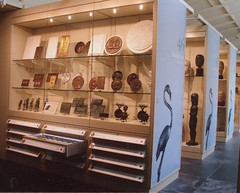 I can report that the American Art Museum medal collection is still standing as described by George Cuhaj. I stood in front of the
collection August 8th, 2015. The drawers are pneumatic and Drawer 2 was marked “Out of Order.” As George mentioned, the Manship pieces tracing his
different designs for the Navy Distinguished Service Medal are truly outstanding. You have to connect your own dots, a task not without its own
rewards.
I can report that the American Art Museum medal collection is still standing as described by George Cuhaj. I stood in front of the
collection August 8th, 2015. The drawers are pneumatic and Drawer 2 was marked “Out of Order.” As George mentioned, the Manship pieces tracing his
different designs for the Navy Distinguished Service Medal are truly outstanding. You have to connect your own dots, a task not without its own
rewards.
To read the earlier E-Sylum article, see:
NOTES FROM E-SYLUM READERS: AUGUST 16, 2015 : More on the American Art Museum
Medal Collection (www.coinbooks.org/esylum_v18n33a08.html)
Steve Ruddell, Chess Player
Regarding chess-playing American numismatists, Julian Leidman writes:
Steve Ruddell, former DC coin dealer, specializing in silver dollars and patterns, was a chess enthusiast as well. I don’t know how high his rankings were, but I remember going to a chess tournament with him.
To read the earlier E-Sylum article, see:
NOTES FROM E-SYLUM READERS: AUGUST 16, 2015 : More Chess-Playing American
Numismatists (www.coinbooks.org/esylum_v18n33a08.html)
Bay Psalm Book at the Library of Congress
"First Among Many: The Bay Psalm Book and Early Moments in American Printing" will open Thursday, June 4, and will close on Saturday, Jan. 2, 2016. The exhibition will be free and open to the public from 8:30 a.m. to 4:30 p.m., Monday through Saturday, in the South Gallery on the second level of the Library’s Thomas Jefferson Building, 10 First St. S.E., Washington, D.C. "First Among Many" is made possible through the generous support of David M. Rubenstein, co-founder and co-CEO of The Carlyle Group.
At the centerpiece of the exhibition will be two copies of the Bay Psalm Book, officially titled "The Whole Booke of Psalmes Faithfully Translated into English Metre" (1640). One copy will be drawn from the Rare Book and Special Collections Division at the Library of Congress. The second copy, which belongs to Rubenstein, will be on display from June 4 through Saturday, Aug. 8. Americans will see these texts together for the first time. Both copies were at one time in the library of the Rev. Thomas Prince and, therefore, originally part of the historic Old South Church Library in Boston.
Librarian of Congress James H. Billington said, "The Library is extremely grateful to David Rubenstein for sharing his extraordinary copy of the Bay Psalm Book. The celebration of this book is the impetus for the Library’s exhibition. The Bay Psalm Book is a book of many firsts—the first English-language book in North America, the first book of American poetry, and the first instance in a long and vital history of printing in America."
To read the complete article, see:
“First Among Many: The Bay Psalm Book and Early Moments in American Printing”
(www.loc.gov/today/pr/2015/15-061.html)
DAVID LANGE AND THE NUMISMATIST
I only wish I could have attended the many activities described in last week's issue, but I'm always chained to our booth or the grading room during bourse hours.
As noted in your introduction, Barbara Gregory has indeed been editor of The Numismatist since 1987, the person to hold that position the longest. Among her first actions after assuming the editorship was recruiting me to write a column about USA coins and related matters. It's had several names over the years but has been running under one title or another since the February 1988 issue. 27 years is probably half the time that Dave Bowers' column has appeared, but it seems like a long ride to me.
My column in The Numismatist remains my primary public presence as a numismatic writer, and I cherish it as such. I write anonymously about coins daily for NGC's websites and customers. My books are complex enough that I'm able to publish them only once every few years, and they also have a limited market. Ditto for my quarterly newsletter, Coin Board News.
On another note, I've taken down my website coincollectingboards.com, but this is only a temporary action. The existing template is no longer supported by the website building software, and this didn't permit me to update the site. The company's current program has so many unnecessary bells and whistles that my attempts to rebuild the site were exasperating. I even had a professional attempt to use the program, and she, too, gave up on it. When I find something more user friendly, I'll be up and running again. In the meantime, anyone seeking old coin boards or albums may still contact me by email at &npsp; langedw@msn.com. Recommendations from E-Sylum readers on manageable website building programs will be most welcomed.
To read last week's complete E-Sylum, see:
Volume 18, Number 33, August 16, 2015
(www.coinbooks.org/club_nbs_esylum_v18n33.html)
THE BOOK BAZARRE
2015 ANA SHOW NUMISMATIC LITERATURE EXHIBITS
Publications by Charles Steigerwalt
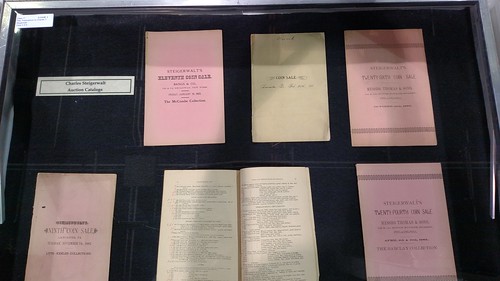
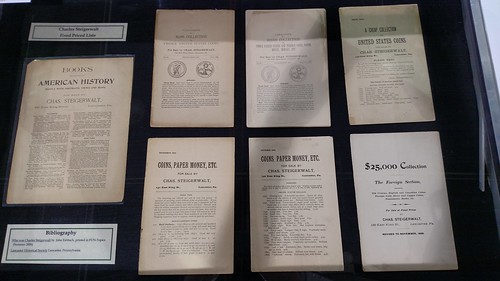
Lancaster, PA dealer Steigerwalt has been overshadowed by his Philadelphia and New York brethren, yet his publications do contain some important and interesting information. Sets are quite difficult to assemble. I enjoyed all of the numismatic literature exhibits this year, but this one covered the type of material I most enjoy collecting myself.
Roman Coins and Their Values

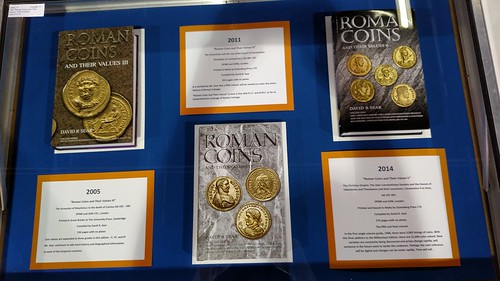
A nicely done six-case exhibit that traces the history of this iconic publication from 1936 to the present. A typical dealer or collector buys and keeps only the latest edition, but a true bibliophile appreciates and understands the value of having access to all editions, in order to understand the development of knowledge in the field and the history and trajectory of market prices.
Buy the Book Before the Coin

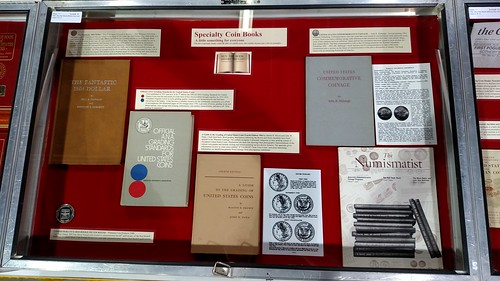
A nice five-case exhibit introducing collectors to the basic sources of information on U.S. coins.
Loubat's Vanities
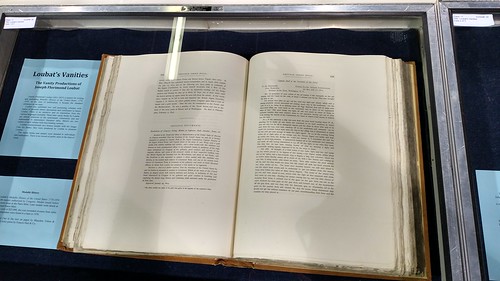
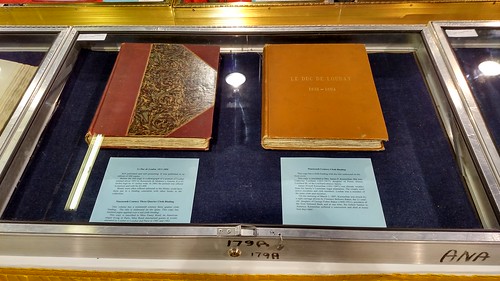
From the exhibit text:
The Vanity Productions of Joseph Florimond Loubat
Joseph Florimond Loubat (1831-1927) is known for writing and publishing Medallic History of the United States 1776-1876. At the time of publication, it became the standard reference on the topic.
Loubat also published two self promoting volumes with copies of personal letters, documents and certificates to honor Loubat. There is no narrative and no translation from the various languages included. These later vanity books by Loubat are almost unknown in the numismatic community and not represented in numismatic literature sales. Shown are two copies of each volume with four binding variants.
Loubat commissioned two bronze medals with his image. Like his books, they were produced by Loubat to promote Loubat.
The vanity books and medals were donated to individuals and institutions. There is no record of public sales at the time of issue.
Collecting Twentieth Century Coins in the 1940s
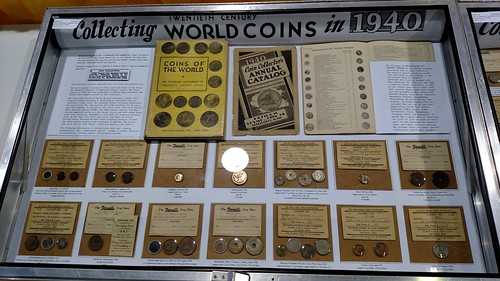
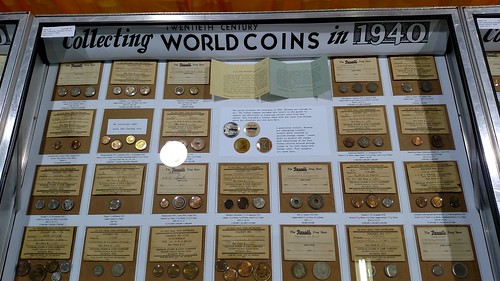
This one wasn't in the numismatic literature class, but it's related and does include some literature and lots of numismatic ephemera. I discussed it last week. Here are a couple more photos and a note from the exhibitor.
Gawain O'Connor writes:
Thanks for your kind words about my exhibit on "Collecting Twentieth Century World Coins in 1940". I was pleased and surprised by all the interest it generated, and it was satisfying that the work it takes to make an exhibit was appreciated so much. I pointed out to my wife that even though it received second place in the dreaded catch-all Class 18, it only lost out to the exhibit that eventually won Best of Show! The literature displayed in the exhibit was as difficult to find as the coins and envelopes.
To read the earlier E-Sylum article, see:
WAYNE’S NUMISMATIC DIARY: AUGUST 16, 2015
(www.coinbooks.org/esylum_v18n33a15.html)
CBS INTERVIEWS MINT SCULPTOR-ENGRAVER DON EVERHART
The U.S. Mint has been honoring our nation's first spouses -- the latest to get a commemorative gold coin is Mamie Eisenhower. From stamping medals to making money, Mint designers are hard at work thinking small, as Anna Werner now shows us.
Donald Everhart, lead sculptor for the U.S. Mint in Philadelphia, says people are fascinated by how money is made. "Once they realize that it's not just, you know, press some buttons on a computer and out pops a coin -- there's a whole process to it."
"There's art in money,' said Werner. "There's not, maybe, money in art, but there's art in money."
"That's a good comment, I like that!" Everhart laughed.
Everhart's designs range from the state quarters we use every day, to medals presented to world leaders.
It's a unique job -- there are only seven sculptor-engravers in the country, and they all work out of the same Philadelphia office.
"How many designs do you think you've come up with?" asked Werner.
"It's gotta be in the thousands, literally," he replied.
Most coin designers use computers, but not Everhart. For him, each design starts with a lump of clay.
And you can't argue with his results, creating images with depths of as little as 70 or 80 thousandths of an inch.
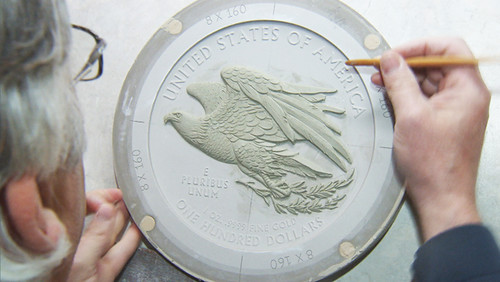
"How much artistic freedom do you have in terms of designing the coins?" asked Werner.
"Surprisingly, a lot. Because the committees like to see new refreshing angles. We've done so many different things on coins that they want to see something that's indicative of the time we live."
Werner asked, "How do you wrap your head around the fact that millions of people have seen your work?"
"Well, millions of people have seen it, but I don't think they know who Don Everhart is. Even if they look at the little tiny initials on it. On every coin or medal that I've done since I've been here, I put initials on. Look for a little DE, usually in the lower right-hand corner."
And then we'll know, "Hey, Don did that coin."
To read the complete article, see:
Moneymakers: Artists at the U.S. Mint
(www.cbsnews.com/news/moneymakers-artists-at-the-u-s-mint-2/)
U.S. COINS WITH SHADY BACKSTORIES
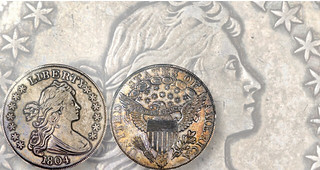 To paraphrase Mark Twain, when evidence is weak or lacking, wholesale returns of conjecture often are derived from a trivial investment of
fact. Often such facts only provide correlation, and correlation is not evidence of causality. Even worse, a notion repeated often enough can be
thought to be a fact.
To paraphrase Mark Twain, when evidence is weak or lacking, wholesale returns of conjecture often are derived from a trivial investment of
fact. Often such facts only provide correlation, and correlation is not evidence of causality. Even worse, a notion repeated often enough can be
thought to be a fact.
Numismatics is not immune to fallacy; numerous examples could be produced in which yesterday’s correlation or notion became today’s “fact.” In some cases, new discoveries have cleared up the fallacies, but in other cases, the fallacies have died hard or not at all.
With so many really rare coins appearing on the market recently, it’s easy to forget that some of the rarest, priciest and most “significant” rare coins aren’t really coins at all. The Merriam-Webster definition of a coin reads: “a small, flat, and usually round piece of metal issued by a government as money.” The key element we focus on here is that it must be “issued by a government as money.” That keeps out a number of very famous “coins.” The 1913 Liberty Head 5-cent coins, 1884 and 1885 Trade dollars, and restrike 1804 dollars were produced clandestinely and illegally, apparently at the Mint, for private profit. Courts are still deciding whether 1933 Saint-Gaudens double eagles are money. Many more examples could be given. It is probably fair to stretch the definition of “coin” to include pattern coins, such as the 1907 Saint-Gaudens, Ultra High Relief, Roman Numerals double eagles, as there is at least the presumption that a government was considering issuing the designs as money.
There are, however, several “rare coins” that fail to meet the definition of “coin,” even if we stretch it to include patterns. Eric Newman and Ken Bressett’s famous book is titled The Fantastic 1804 Dollar for more than one reason. The stories of how the 1804 dollars came to be and how Newman and Bressett learned about their origin are pretty fantastic. But also, the coin is fantastic in the sense of being a fantasy piece. The “original” Class I 1804 dollars were issued by the U.S. government, but not as money (Classes II and III were produced clandestinely and illegally for sale to collectors beginning around 1859). Since they were never intended as money, 1804 dollars don’t fit our definition of coins.
To read the complete article, see:
Where did they come from and
why do they exist?: Shady stories for U.S. coins
(www.coinworld.com/news/us-coins/2015/08/shady-stories-for-US-coins-add-value-and-mystery.html)
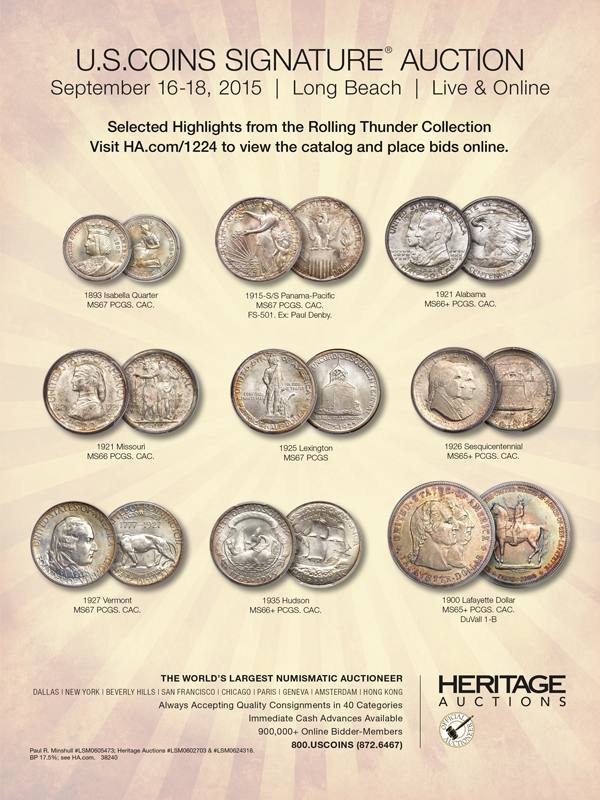
WILLIAM WEEKS AND HIS 1839 LARGE CENTS
John Lupia writes:
Here is the first official installment that Early American Coppers (EAC) members will relish as well as American Numismatic Society historians, from William Raymond Weeks. He is discussing his bids for the Chapmans' 15th coin auction sale to be held commencing on the 15th of December, just 13 days from the date of the postal card. His discussion is in relation to his collection of 1839 Large Cent varieties, which he deems being the finest and largest in the country, and mentioning his 1814 UNC Large Cent in relation to the one listed in the auction catalogue. I am sure EACers will be amused to see his highest anticipated bid of $2 on the 1839/36 Large Cent that was purported to be finer than that in the Bushnell sale.
Weeks, William Raymond, (1848-1919) 763 Broad Street, Newark, New Jersey; 206 Claremont Avenue, Montclair, New Jersey; 315 West 106th Street, New York, New York. Lawyer and numismatist.
He was born at Newark, New Jersey on August 4, 1848, son of John Randel Weeks (d. 1879) and Mary Frances (Adriance) Weeks. He graduated from the Newark Academy in 1865. He served in the New Jersey militia during the Civil War.
He married Irene Le Messena in 1869. They had two daughters. He was admitted to the bar and practiced law in 1870. He was admitted to the Bar as counselor in 1876. He was an active life member of the ANS since May 16, 1882.
He was the historiographer of the ANS. He collected Early American Copper -Colonial coins, Large cents and medals. He also wrote to the Chapman Brothers on December 2, 1885 telling them he owned the finest collection of 1839 Large Cent varieties known.
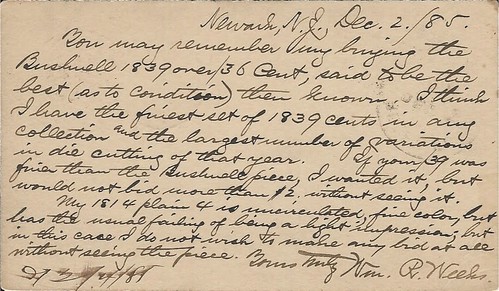
Postal Card discussing anticipated bids on the Chapman coin auction held December 15-16, 1885: "You may remember my buying the Bushnell 1839 over/36 Cent, said to be the best (as to condition) then known. I think I have the finest set of 1839 cents in any collection and the largest number of variations in die cutting of that year. If your /39 was finer than the Bushnell piece, I wanted it, but would not bid more than $2; without seeing it.
"My 1814 plain 4 is uncirculated, fine color, but has the usual failing of being a light impression; but in this case I do not wish to make any bid at all without seeing the piece. Yours truly Wm. R. Weeks." In smudged brown ink the Chapman notation "O 12/4/85" signifying they sent out a reply on that date.
In 1883 he organized the Bloomfield Volunteer Fire Department. In 1895 he was admitted to the New York bar and opened an office there at 50 Broadway, New York.
In 1885, he became a Life Member of the New Jersey Historical Society. He was elected recording Secretary from 1890 – 1894.
In 1892, he sent a copy of S. S. Crosby, The Early Coins of America (1873) to Francis Bazley Lee, Trenton, New Jersey to help him with his research on colonial coinage in the state of New Jersey.
In 1896 he became a member of the Sons of the American Revolution.
He was arrested in December, 1901 for extortion and grand larceny of $37,986.16 from the Emma Plaut estate. After his arrest and investigation it was discovered he also stole money from the Edward Lister estate as well.
His wife Irene died in 1902 shortly after he was arrested and imprisoned.
In order to raise money to pay his debts from the court case following his arrest in December 1901, he had Stanley V. Henkels catalogue his library and sell it at Davis & Harvey, 1112 Walnut Street, Philadelphia, Pennsylvania, on March 5-6, 1902. Afterwards, at New York, he sold his collection combined with the late Augustus Humbert a California Assayer, consisting of 1,392 lots through the Chapman brothers on May 1-2, 1902. Adams rating B. Prices realized of over fifty lots were published in the June issue of The Numismatist.
Later on he remarried Oriana M. Clearman in 1910. Also, in 1910 he was the ANS Librarian and the ANS published his manuscript: The American Numismatic Society. (http://babel.hathitrust.org/cgi/pt?id=mdp.39015025928758;view=1up;seq=1)
He was a member of the New York Numismatic Club and appeared in the January 24, 1913 photo.
He died at his home in Montclair, New Jersey on October 29, 1919.
To read the complete article, see:
WEEKS,
WILLIAM RAYMOND
(https://sites.google.com/site/numismaticmallcom/encyclopedic-dictionary-of-numismatic-biographies/weeks-william-raymond-1)
HANNES TULVING JR. PLEADS GUILTY TO WIRE FRAUD
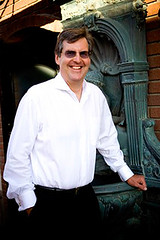 A Costa Mesa-based coin and precious metals dealer and his company pleaded guilty to wire fraud in federal court Thursday for defrauding
more than 400 customers of more than $15 million, a statement from the U.S. Attorney General said.
A Costa Mesa-based coin and precious metals dealer and his company pleaded guilty to wire fraud in federal court Thursday for defrauding
more than 400 customers of more than $15 million, a statement from the U.S. Attorney General said.
Newport Beach resident Hannes Tulving Jr., 60, the owner and sole shareholder of The Tulving Co., sold coins, bullion and other metals online.
In pleading guilty, he admitted to a U.S. magistrate judge in North Carolina that he induced customers to place orders for coins and other merchandise he knew could not be fulfilled. From August 2013 to January, Tulving used payments from new customers to complete orders for older customers, pay company debts and return money to previous customers who had not yet received their orders.
One San Diego man ordered $39,000 in American Eagle gold coins from The Tulving Co. He was promised the shipment would arrive in seven days. Four months later, he still had not received the coins. Another customer in South Dakota filed a lawsuit after the company failed to deliver 240 gold coins, for which he paid more than $318,000. A Phoenix man had not received the 80 Gold Maple Leaf coins he paid $107,000 for when he filed his lawsuit months later.
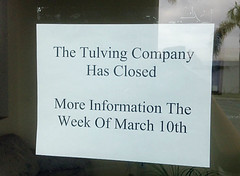 The company closed in March 2014.
The company closed in March 2014.
The company, which had been described as a major player in the industry, had also filed for Chapter 11 bankruptcy protection. The business owed $1 million to $10 million to as many as 49 creditors, according to bankruptcy documents.
More than 20 years ago, Tulving was accused by the Federal Trade Commission of overpricing rare coins and going back on return guarantees through another Newport Beach-based company he owned, Hannes Tulving Rare Coin Investments.
He was suspected of defrauding clients out of more than $40 million. He settled with the FTC in 1992 and agreed to pay $1.3 million.
Tulving faces up to 20 years in prison and $250,000 in fines. He is required to pay restitution to customers as part of the plea agreement. The Tulving Co. faces at least $500,000 in fines, at least one year of organizational probation and is required to pay restitution.
Tulving was released on bond. No sentencing date was released.
To read the complete article, see:
Costa Mesa-based coin dealer pleads guilty to defrauding
customers of more than $15 million in merchandise (www.ocregister.com/articles/tulving-678720-company-coins.html)
MORE ON AUTHOR BILL ANTON, JR.
David Gladfelter writes:
There are three "William Antons." The one most of us know (or knew if he is in fact dead) was Bill, Jr. Bill's father, William T. Anton, was also a collector of "Jerseyana" and I have his personal annotated copy of Wismer's "Descriptive List of Obsolete Paper Money Issued in New Jersey," a 1928 reprint of Wismer's articles published in The Numismatist.
Our Bill had a son, William III, whom I have not met, but Roger Siboni might know. Young Bill attended the first of Roger Siboni's summer gatherings. The listing for William Anton in the on-line version of Pete Smith's American Numismatic Biographies is too terse to me to tell which Anton he is referring to.
In the 1960s and 1970s Bill, Jr. ran small ads in The Numismatist under the name Woodcliff Investment Corp. which bought and sold colonial American coins. He was a contributor to both the 1971 and 1976 editions of Scott's Comprehensive Catalog and Encyclopedia of U. S. Coins which had a strong colonial section. Bill had some business dealings with Joseph Rose, probably through Harmer Rooke, a New York stamp collectors' auction house which held its first numismatic auction in 1969.
Bill wrote occasional pieces about his hobby and sometime business, American colonials. His main contribution to the literature was "A Modern Survey of the Copper Coinage of the State of New Jersey" published in The Colonial Newsletter in 1975. Bill Anton's name appears many times in the condition census of varieties of New Jersey state coppers listed in the leading treatise on that topic written by Roger Siboni, Jack Howes and Buell Ish, published jointly by the American Numismatic Society and the Colonial Coin Collectors Club in 2013.
David adds:
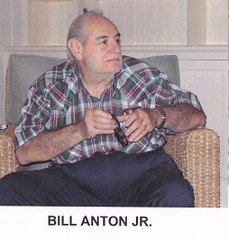 This photo of Bill was taken at Roger Siboni’s house in Mantoloking, N. J. in 2004, with a group of collectors and students of colonial and
early American numismatics, and published in a book written about the meeting which has become a much-anticipated annual event. Bill specialized in
collecting New Jersey state coppers, his collection is one of the best. He also collected New Jersey colonial paper money; this collection is
reported to include a rare 12-subject pane of signed New Jersey bills of credit of the much admired issue of March 25, 1776.
This photo of Bill was taken at Roger Siboni’s house in Mantoloking, N. J. in 2004, with a group of collectors and students of colonial and
early American numismatics, and published in a book written about the meeting which has become a much-anticipated annual event. Bill specialized in
collecting New Jersey state coppers, his collection is one of the best. He also collected New Jersey colonial paper money; this collection is
reported to include a rare 12-subject pane of signed New Jersey bills of credit of the much admired issue of March 25, 1776.
Speaking of both Bob Vlack and Bill Anton, Julian Leidman writes:
Astonishing that two great colonial specialists pass at the same time. Both Bob and Bill enjoyed their hobby/business and their collections and I have fond memories of both.
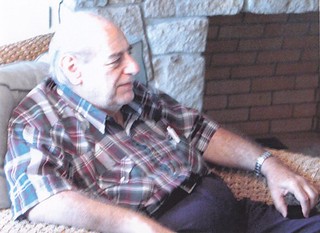
To read the earlier E-Sylum articles, see:
BILL ANTON HAS PASSED (www.coinbooks.org/esylum_v18n33a06.html)
ROBERT A. VLACK, 1927 - 2015 (www.coinbooks.org/esylum_v18n33a05.html)
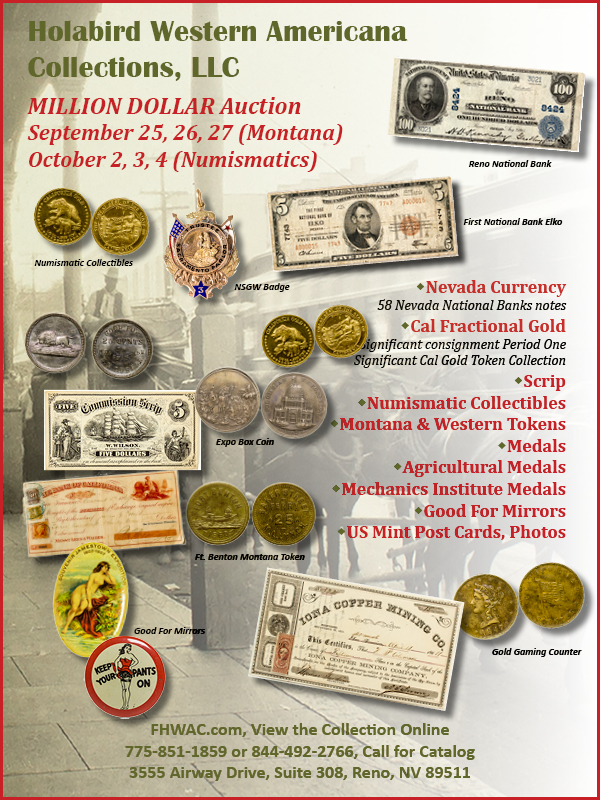
MORE ON THE 2015 ANA WORLD'S FAIR OF MONEY
Corrections and Additions
Whew. Last's week's diary was a whopper. Here are some corrections and additional items that didn't make it in by midnight.
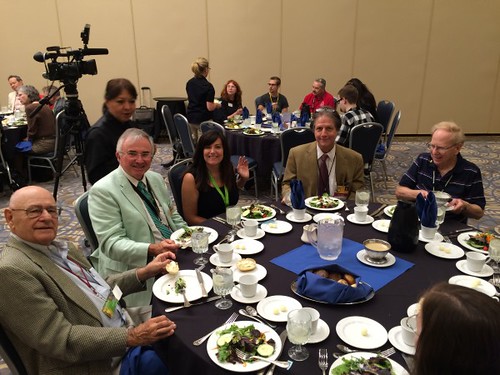
The gentleman at the left in this photo from the Sundman Lecture Luncheon is Ted Lemba from Florida. As noted, the others (left to right) are: David Sundman, Jill Kimball, David Lisot and Ken Bressett. Corrections include:
- The name of the exhibit on the Loubat books is "Loubat's Vanities." ( I wrote "Varieties.");
- The Numismatic Americana dealer's name is spelled "Shamhart".
- Jill Kimball is Littleton Coin Company's Public Relations Manager. I managed to write "Whitman" instead.
Sorry! The biggest mixup came with the my comment following this quote from Susan Trask:
I feel like I know you really well - I take you to bed with me every Sunday night." That was the funniest line I'd heard all week. Luckily her husband was right there and mine doesn't read this newsletter (as far as I know, anyway).
Which should have read, "... and my wife...". I don't have a husband (not that there's anything wrong with that, as Seinfeld would say).
Thanks to Dave Ginsburg, David Sundman and others for setting the record straight on all of these.
Jeff Starck's Book Purchases
One of the highlights of the ANA show, besides having a chance to make new contacts and connect with longtime friends, is to obtain numismatic literature.
Aside from the books mentioned here in recent weeks (Paul Cunningham’s Lincoln’s Metallic Imagery and Prue Fitts’ The Beginner’s Guide to Identifying Byzantine Coins), I picked up a few titles from Phillip Mussell, of Token Publishing.
He was offering the firm’s annual Medal Yearbook, which while mostly focused on what collectors here would call orders and decorations, did also include a small number of military award medals that can be found in auction catalogs and dealer showcases.
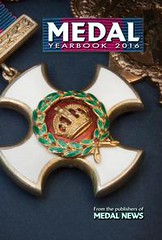 Since many of the designers and topics cross over to traditional numismatics, the book was a worthy purchase. The 2016 edition of
Medal Yearbook is due for release Sept. 27, to coincide with Coinex in London.
Since many of the designers and topics cross over to traditional numismatics, the book was a worthy purchase. The 2016 edition of
Medal Yearbook is due for release Sept. 27, to coincide with Coinex in London.
Though the 2015 Coin Yearbook is almost a year old, at $10, it was well worth it, offering a presentation of the most important information about British and related coins that is more accessible, though less scholarly, than the heralded Spink guide.
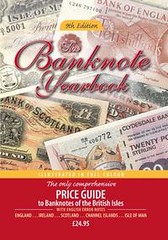 Also found at his table was The Banknote Yearbook As the Token Publishing website notes, The Banknote Yearbook 9th Edition is
the complete guide to English, Scottish, Irish and Island notes and is now firmly established amongst Banknote dealers and collectors alike.
Also found at his table was The Banknote Yearbook As the Token Publishing website notes, The Banknote Yearbook 9th Edition is
the complete guide to English, Scottish, Irish and Island notes and is now firmly established amongst Banknote dealers and collectors alike.
That book was helpful immediately upon my return to the Coin World office, as I had to confirm something about Scottish paper money.
It should be noted that some U.S. collectors might find these books through Amazon – for instance, new copies of the Banknote book are there for less than full retail, and don’t require costly shipping from the UK. Each of these titles are worthy additions to a numismatic library.
Token Publishing (www.tokenpublishing.com)
Medal Yearbook 2016 (www.tokenpublishing.com/shop.asp?cid=18&pid=7918)
Coin Yearbook 2016 (http://www.tokenpublishing.com/shop.asp?cid=17&pid=7917)
Banknote Yearbook 9th Edition (www.tokenpublishing.com/shop.asp?cid=16&pid=7905)
Jeff adds:
I lucked out in that I was riding back in a car with Bill Gibbs, so I was able to buy a whole box of goodies!
To read the earlier E-Sylum article, see:
WAYNE’S NUMISMATIC DIARY: AUGUST 16, 2015
(www.coinbooks.org/esylum_v18n33a15.html)
WAYNE'S NUMISMATIC DIARY: AUGUST 23, 2015
Tuesday evening I went to Jerry's Seafood restaurant in Bowie, MD for a meeting of Nummis Nova, my Northern Virginia numismatic social group. Yes, we know Bowie isn’t in Virginia, but we do have Maryland members including Julian Leidman, who was our host for the night.
I met Dave Schenkman in the parking lot, and inside we found Gene Brandenburg, Ron Abler and Eric Shena waiting at the bar. Gene looked me up and down, making sure I was wearing long pants (he apparently found the sight of me wearing shorts at the ANA convention disturbing). I assured him that photo was taken on Wednesday, and that I'd put my big boy pants on for Thursday and even wore a suit for the banquet Friday. Guess I should have added photographic evidence to last week's diary.
The Spectacle of Bronze
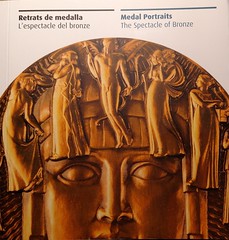 I brought along a few new numismatic books to display, including Ron Guth's 100 Greatest Women on Coins and this great little
book on medals.
I brought along a few new numismatic books to display, including Ron Guth's 100 Greatest Women on Coins and this great little
book on medals.
Numismatic Pamphlets
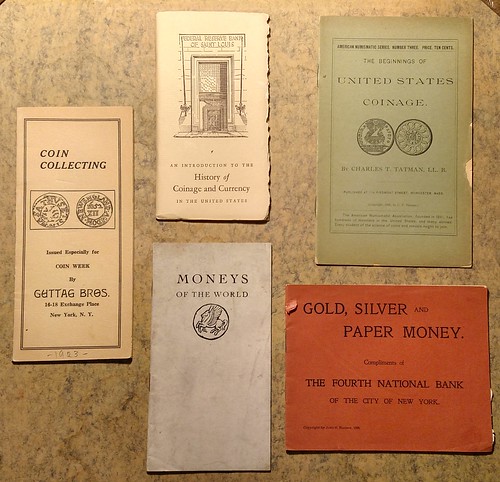
I also displayed this nice little group of pamphlets I bought at the NBS fundraising auction at the General Meeting in Chicago. Some are duplicates, but overall it was a nice group to add to my numismatic ephemera collection.
NBS Kolbe Award
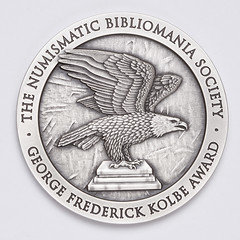
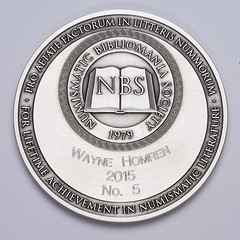
David Sundman provided these nice photos of my George Frederick Kolbe award. Thanks! I got lots of congratulations from the attendees.
NLG E-Sylum Awards
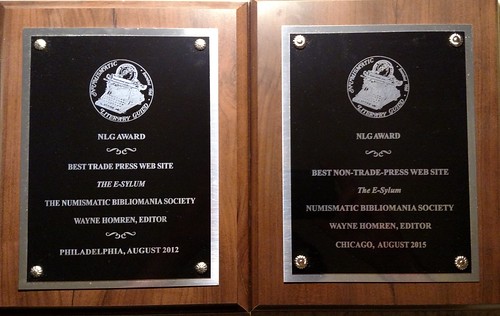
Kidding aside, I'm very grateful for the award and recognition.
The Crab Bomb was wonderful, as was my Loose Cannon draft and all the numismatic fellowship of the evening. Sorry for such a short report this time around. Since this meeting was delayed a week due to the ANA convention, the September meeting will roll up on us fast. Howard Daniel and I will be the hosts.
PAUL WITHERS ON NUMISMATIC WRITING
Some Thoughts On Numismatic Writing
When I tell friends that we are going to France to work, they smile knowingly, as if they are certain that we are to about to partake in an orgy of reckless indulgence in food and wine in a warm, pleasant climate. This is only partially true, but if you are not familiar with Europe and are interested in food, wine, coins, publishing and writing, and a little advice for those contemplating writing, then read on…
Imagine 8am on a typical Thursday morning in Wales a couple of months back: after a shower and breakfast it was time to go to the fishmonger who visits our village once a week that day. At 8.30 it was time to start work, and the day began with three fairly lengthy incoming ’phone calls, one after the other, and those calls resulted in two outgoing calls, then there were several e-mail enquiries about books to be answered, so it was well gone eleven before we could get down to the serious business of writing, the scheduled task for the day.
Don’t get me wrong, the calls and e-mails were not unwelcome, indeed two of the calls were from people who have become good friends through numismatics; it’s simply that without interruptions the progress of a book could be expedited much more rapidly, and sometimes this is necessary. This is why this year we have visited our French cottage twice, the first time in May to tie up the loose ends of the Anglo-Gallic book.
Books do not spring unbidden into the author’s mind, nor are they written instantly by the computer. Those who have read my previous musings may recall that our Anglo-Gallic book has taken twelve years to research and write. By then we had each read and re-read the book umpteen times, and each of us had checked and double-checked the work of the other two.
Why do we spend such a long time on a book, and make so many checks ? In pre-internet days a friend rang asking whether we had seen X’s new book. X was a mutual acquaintance who wrote on a subject that interested us both. I had to admit that I had not seen it. I heard a chuckle and when I’d said that I would take a quick look, I was told that one was in the post to me. It arrived the following morning. The book was accompanied by my friend’s list of comments and errors, which was almost as large as the book. I read the chapters that related to my interest and was amazed at the many errors and omissions. I forwarded the text and my corrections to a friend in the USA. I got his immediate response on the American-related section. I forwarded those and my own to the person who had sent the book to me and they were relayed to the author. Alas, I did not keep the book, for it would now be an extremely rare numismatic book because on seeing the comments and the corrections necessary, the author had the entire printing pulped !
This was an important lesson to me and ever since then I have been ultra-careful as to what I write, and pre-publication manuscripts of books are sent to friends for their honest opinions. In the first instance they go to non-numismatists, who ask questions like “What’s the difference between feudal coins and regal coins* ?”
Such people are treasures, not only because they do the job time after time, but because they make you aware that the world is full of real people who know coins through spending them, not collecting them. Then others took over, some correcting split infinitives, not realizing that for a Welshman, the split infinitive is a tool of poetic expression, whilst others corrected spelling and grammatical errors, added commas and changed my commas for semi-colons, or colons where necessary.
Then Duncan stepped in to give the book the once, or even thrice over. Some people might say that Duncan is pernickety, perhaps because aside from his numismatic interests, his day job is writing and up-dating the operating manuals for the atomic power station where he works, so you listen very carefully to what he says, or your book could become the blueprint for a numismatic Chernobyl, or if you think that such things are only the result of Soviet Russian failings, remember Three Mile Island, if you are old enough !
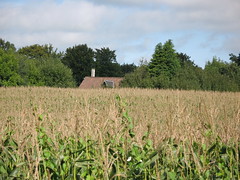
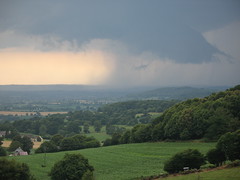
We went to France for peace, quiet and isolation, to get down to the last bit of polishing which included designing the front cover and mundane tasks such as working out where the tab settings should be, and then making sure that they, and other things were consistent throughout the book. Of such details are the best books made.
That process took two whole weeks. Each page is carefully composed and laid out. My day job 40-odd years ago was teaching what we then termed “under-functioning” children, who were sometimes very bright indeed and included some of whom were suffering from what is now described as Asperger’s syndrome. Each part of the learning process was split into small discrete steps. This was good training for the writing of numismatic books because laying out things so that they cannot be misunderstood is essential, and there is, I am sure, a touch of Asperger’s in every collector. In scientific subjects, and numismatics is a science, the anal retentive wins every time !
It is tempting to be miserly when writing a book. The internal accountant wants you want to cram as much onto a page as possible, this is because some years later, in another training, paper and printing plates were costly. However, time has taught me that the appearance of a book is almost as important as its content. Having a book that looks good can make all the difference between selling a hundred, or just a dozen, and a little white space can result in a dramatic difference to the overall appearance of a book and its user-friendliness and clarity.
When that was done, we took the book back to Wales and within a week or three of final dotting of t's and crossing i's, we packed it off to a museum curator whose speciality is English hammered coins; a retired, but not inactive, French museum curator whose familiarity with French coins is unrivalled; a specialist dealer in European hammered coins and one or two others besides. These folk were chosen, not only because they are clever numismatists, but because some of them have experience editing books and journals. Three of them immediately came up with valuable suggestions. One knew someone who probably had a photograph the book needed and sent us that person’s e-mail address. We e-mailed him and the photograph and permission to use it reached us electronically within two hours. Another sent us information about an article that we had overlooked that had interesting and relevant information.
We are now eagerly awaiting more comments, and for the retired French curator to write a French preface.
Now books are not written in isolation, and as well as the Anglo-Gallic book being more or less finished, our contribution to Spink’s Coins of Scotland, Ireland and the Islands, for which we did the typesetting and much of the photography, was more or less finished. So, it was on with the next project, but which one ?
[For those who want more details, or to reserve of one or both of forthcoming books, visit the Galata, and/or Spink websites: www.galata.co.uk and www.spink.com]
For those who wonder what the above has to do with the price of fish, whilst we were in Ireland doing the photography for the Irish portion of Coins of Scotland, Ireland and the Islands two years ago (and yes, these things really do take that long), that visit to the Emerald Isle also provided the inspiration for our next writing and publishing project, a catalogue of Irish gunmoney.
In the good old days, for most numismatic authors, the genesis of a book was the formation of a reference collection. A “reference” collection is one that has, as far as is known, a high degree of completeness, so that new specimens that turn up can be compared with those already in the collection. You know when it is time to publish when you examine a reasonably large collection that you have not seen before, and not more than 5% of the coins you see are new !
Two of our books: British Coin-Weights and British Copper Tokens, 1811-1820, began that way. However, these days my life is too near to its end to contemplate forming a new significant collection, even if we could afford to do so. Whilst in Ireland we saw what must be the best collection of Irish gunmoney in private hands, which we photographed to act as a reference collection. Its owner began to form the collection over a quarter of a century ago, back in the days when there was plenty of such material around. The collection is an academic one, i.e, if the piece was from a different die, the owner kept it, regardless of its state of preservation. He also kept examples of die duplicates when they showed the development of die cracks. The object of the exercise was to collect every possible die and combination, regardless of condition, though wherever possible the owner bought the best possible piece available, and made many improvements over the quarter-century.
To my mind, this collection, approaching 1500 coins, in brass, pewter and silver, had the possibility of revealing hitherto well-kept secrets, because whilst people have been looking at these coins for three centuries, no one has as yet made a rigorous, coin-by-coin photographic survey and record of the series for a die study.
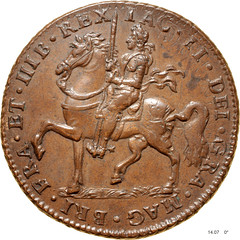 We also had copies of the available literature on gunmoney, which amounts to a lot less than it sounds, because not much has been written
on the subject, indeed some earlier authors had been pretty sniffy about these pieces and sought out only the curiosities, the errors and off-metal
strikes, and the really pretty pieces that they found interesting.
We also had copies of the available literature on gunmoney, which amounts to a lot less than it sounds, because not much has been written
on the subject, indeed some earlier authors had been pretty sniffy about these pieces and sought out only the curiosities, the errors and off-metal
strikes, and the really pretty pieces that they found interesting.
Anyone not living in Wales might have concluded that the month of June, 2015 was the beginning of a hot summer. Indeed for those in the south of England things were good indeed. Indeed, in anticipation of increases of temperature arriving from the south, I had had a close haircut. Then the media announced that the 2nd of July was the hottest July day since records began. However, in our little village in Wales, it just reached a humid and sticky 22°C, and to add insult to injury it rained ! The next day there was prolonged rain and the temperature only just reached 17°C, so much for a blazing June and a hot British summer.
We decided to get off as quickly as possible. Now, normally there is plenty of space on the ferry from Portsmouth to Caen outside of school holidays. However, French ferry workers were (and still are) striking, and lorries using the Channel Tunnel found themselves unable to use that route because burning tyres were placed on the access roads, and thousands of African immigrants were openly breaking into lorries in an attempt to become stowaways. So, we took the last two berths available. So, at the beginning of July we found ourselves en route for France, clutching the literature and our laptop computers.
For those unfamiliar with gunmoney, it is comes in four denominations: crowns, halfcrowns, shillings and sixpences, and of those the halfcrowns and the shillings come in two sizes. They were struck bearing just two dates 1689 and 1690. The crowns and the small size halfcrowns were struck over large size halfcrowns and shillings respectively. The crowns were only struck dated 1690. Some pieces were also struck in silver because, it is said, officers, or perhaps it was gentlemen, would not accept the brass rubbish that the Stuart king, James II, who had already been ousted by the population of England, was trying to regain his throne through the support of the population of Ireland who were largely Roman catholic. What is interesting and attractive to some people is that all denominations apart from the crown were struck bearing the month they were issued, as well as the year. It is said that they were to be redeemed, month by month, for good silver money once James won back his rightful place as king.
After our arrival in France we spent the first fortnight checking the work of the previous six months. This sort of thing is not really the most pleasurable part of writing or research, but it has to be done, and obviously accuracy has to be 100%. Furthermore, it is best done by two people working together. It can only done in short concentrated bursts. Any more and you become bad-tempered, tired and begin to lose patience and concentration, so breaks are essential. We fill them with activities such as : reading, writing, cooking, shopping, preparing food or eating. Other less pleasurable, but equally essential ways are: dusting, vacuum-cleaning, washing up and gardening.
Of the distractions, the most pleasurable are cooking and eating and shopping for things that are novel and interesting. Prices in shops can vary considerably so we have learned to shop around for bargains. The French way of life is quite different from the British. The availability of some commodities, including vegetables can vary considerably. Twenty years ago, for example, if was impossible to buy parsnips in mainland Europe. Now, due to an influx of British immigrants into Normandy, they are available. I remember my Danish father-in-law’s reaction some 40 years ago when I confessed my love of this humble but delicious vegetable, which was not then available in Denmark. We had difficulty even in finding the Danish word for it. “Oh” said he, when he discovered what they were “we feed them to cows !” Initially the French reaction was much the same, but the parsnip has gained popularity right throughout Europe since the days when an enthusiastic au-pair took back to Germany a packet of seeds so that she could grow them there because none were available there.
Most Brits imagine that ingredients for cooking are better in France than they are in the UK. However, as someone who regularly shops in both countries, I can say that vegetables in the UK in supermarkets are fresher, and are available in much greater variety, and that when you consider what is available in ethnic shops here in the UK, we Brits are indeed very lucky. However, in France vegetables in season are available and they become cheap, unlike in the UK where we get things all the year round and there is little apparent seasonal variation and hardly any variation in price.
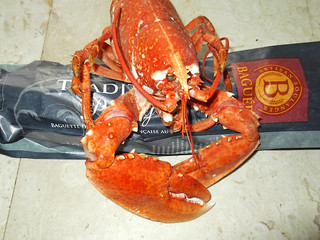 One thing which always amazes the non-French visiting France for the first time, is that staple of French life, crispy, crunchy, tasty
bread. Someone we know commented that French bread was lovely when it was hot, but a couple of hours later it was not to be recommended. I could only
point out that precisely because of that it is freshly baked twice a day, every day, right throughout the towns, villages and cities. If I had to say
what epitomizes France for me it is the sight of an Frenchwoman making her way home from the baker’s shop, carrying anything from a single baguette
to an entire armful of bread. Our tiny town, population 2,878, has no fewer than five bakers, and in addition, there are two (small) supermarkets
that also sell bread. French bakers, however, are learning rapidly, and even the most traditional are now baking with multi-seed flours, and
providing pastries, tarts and other delights, though Danish-style open sandwiches have yet to reach France.
One thing which always amazes the non-French visiting France for the first time, is that staple of French life, crispy, crunchy, tasty
bread. Someone we know commented that French bread was lovely when it was hot, but a couple of hours later it was not to be recommended. I could only
point out that precisely because of that it is freshly baked twice a day, every day, right throughout the towns, villages and cities. If I had to say
what epitomizes France for me it is the sight of an Frenchwoman making her way home from the baker’s shop, carrying anything from a single baguette
to an entire armful of bread. Our tiny town, population 2,878, has no fewer than five bakers, and in addition, there are two (small) supermarkets
that also sell bread. French bakers, however, are learning rapidly, and even the most traditional are now baking with multi-seed flours, and
providing pastries, tarts and other delights, though Danish-style open sandwiches have yet to reach France.
Why do I tell you this ? Because in another half century, this may be the only place where this is recorded !
*Apparently the answer that regal coins were issued by kings, and feudal coins were issued by those feuding will not do !
To be continued…
THE BOOK BAZARRE
OTTOMAN-ERA COIN CACHE SEIZED IN ISTANBUL
Antiquities trafficking from source countries to collector markets requires a global network of routes and facilitation by domestic and international criminal groups and, or middle men. Although the various trajectories are always evolving, there are certain well-established trafficking routes regularly used for the purpose of transporting illicit goods, be they drugs, precursor chemicals, illicit arms, humans or portable antiquities
But does Turkey serve as a trade route for illicit antiquities?
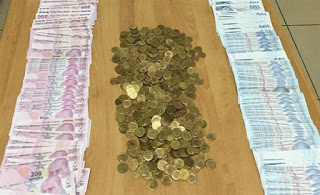 This week Turkish authorities announced that police had detained two Syrian antiquities smugglers also in Istanbul’s Esenyurt district and
confiscated 500 historic "sikke" dating back to the Tanzimat period (1839–1876) of the Ottoman Empire. Along with the coins police seized
ammunition, a firearm, and a substantial amount of cash in three separate currencies:
This week Turkish authorities announced that police had detained two Syrian antiquities smugglers also in Istanbul’s Esenyurt district and
confiscated 500 historic "sikke" dating back to the Tanzimat period (1839–1876) of the Ottoman Empire. Along with the coins police seized
ammunition, a firearm, and a substantial amount of cash in three separate currencies:
€119,000 (Euros) ₺134,500 (Turkish lira) $4,250 (US Dollars)
Is the antiquities trade always tied to the illicit drug trade?
Certainly not. However one could conclude that underworld figures willing to ply their trade with one black market item (heroin) might be convinced to transport/fence other lucrative goods (coins) available on the illicit market if and when opportunity knocks and they are presented with objects for which there are likely to be buyers.
Is the antiquities trade tied to one specific district?
Again certainly not. Nor should any parallel be drawn by any of our readers connecting these two isolated events in one distinct of Istanbul.
The lack of solid statistical reporting in the field of heritage-related crimes and the clandestine nature of illicit trafficking in general make drawing conclusions as to how often one type of illicit trafficking overlaps with another impossible to ascertain. What is important however is that we actively recognize that fluid network structures, rather than more formal hierarchies, coupled with porous borders and geographical proximity to destabilized source countries located in the vicinity of established trafficking corridors where transnational criminal networks are already active could be leveraged as a means to traffic movable heritage. It should also be understood that the average participant may not be a career criminal, but a regular citizen attempting to exploit an opportunity to supplement their income as a single link in a complex chain.
To read the complete article, see:
Two Syrians Detained in Istanbul’s Esenyurt District
for Smuggling Ottoman-era “Sikke” Coins (http://art-crime.blogspot.ca/2015/08/two-syrians-detained-in-istanbuls.html)
THE CASE FOR BUYING ANTIQUITIES TO SAVE THEM
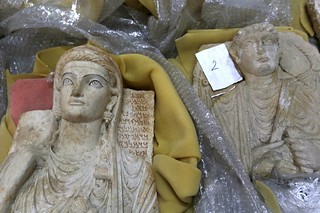 The barbaric murder by Islamic State of Khaled Asaad, the archaeologist overseeing the ancient site of Palmyra in Syria, reported on
Tuesday, brings fresh focus on the antiquities that Islamic State, or ISIS, alternately destroys or tries to sell. Given the antiquities’ often
bloodstained provenance, how should the West regard cultural property looted from regions of military conflict, specifically Syria and Iraq?
The barbaric murder by Islamic State of Khaled Asaad, the archaeologist overseeing the ancient site of Palmyra in Syria, reported on
Tuesday, brings fresh focus on the antiquities that Islamic State, or ISIS, alternately destroys or tries to sell. Given the antiquities’ often
bloodstained provenance, how should the West regard cultural property looted from regions of military conflict, specifically Syria and Iraq?
The prevailing view among archaeologists, reflected in bills in Congress, is to exclude from the U.S. all antiquities thought to originate in those countries.
This is a mistake. After decades of museum experience with cultural property of uncertain provenance, I believe that we should accept looted antiquities from these troubled areas, even when such action might be considered “encouraging looting.” The expenses that museums might incur—including the costs of returning the pieces to the countries of their origin—are worth paying to keep them out of reach of ISIS sledgehammers.
No one, anywhere, should buy art from ISIS. Should U.S. museums buy antiquities from Syria and Iraq, some of the money will likely go to refugees fleeing the region, and some will undoubtedly pass into the hands of the small-time looters and smugglers who have long supplied the bazaars of the two countries. But there is no verifiable evidence, despite a media frenzy, that ISIS obtains significant funding by selling antiquities or taxing art looters.
In times of extraordinary risk, we should be open to dealing with bad guys to create a safe harbor for works of art. This is an act of rescue and stewardship—and should be done with the explicit understanding that eventually, when the time is right, the objects will be repatriated to the country of their origin.
There are examples of art rescues that might serve as a model. After Turkey invaded northern Cyprus in 1974, the Christian population was forced out and its churches were ransacked. Thousands of Byzantine artworks were plundered, including frescoes from the interior of a tiny chapel near the village of Lysi that showed Christ in the dome and the Virgin Mary in the apse. In the early 1980s a Munich-based Turk named Aydin Dikmen offered these frescoes, cut up into three dozen pieces, on the black market through a London dealer. He identified himself as an archaeologist.
Enter Houston oil heiress and arts patron Dominique de Menil. After secret consultations with church and government officials in Nicosia, she bought the frescoes from Mr. Dikmen and then paid to have them restored and reassembled, at a cost of more than $1 million. The Menil Foundation in Houston (for which I worked in the late 1970s) retained the frescoes for almost 25 years, exhibiting them in a modernist chapel beginning in 1997. I was fortunate to have played a role in that rescue.
In 2012, by mutual agreement between the Menil Foundation and the government of Cyprus, the Lysi frescoes were returned to the island. They are now displayed in the Byzantine Art Museum in Nicosia.
Imagine what would have happened if those frescoes had been intercepted at the U.S. border and sent back to northern Cyprus. Or what would be lost to the world if the frescoes, cut into pieces, had been sold to dozens of private collectors around the globe.
If antique statuary like that already destroyed by ISIS is spirited out of Mosul before the next wave of destruction—and then offered on the international black market—museums should not be afraid to act. They should work in consultation with government and museum officials in Baghdad, and with the U.S. State Department. They should exercise the highest standards of due diligence and never do anything to assist ISIS or its affiliates. But I believe a rescue mission would in the future come to be celebrated the way the rescue of the frescoes in northern Cyprus are today.
To read the complete article, see:
The Case For Buying Antiquities To Save
Them (www.wsj.com/articles/the-case-for-buying-antiquities-to-save-them-1440024491)

SELECTIONS FROM EARLY AMERICAN AUGUST 2015 SALE
Lot 2176: 1776 Georgia Colonial Note $8 “Man Holding Cane”
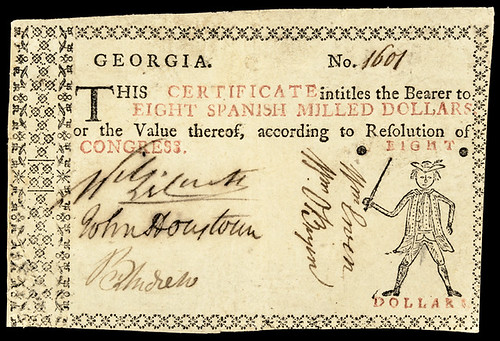
Georgia. 1776. Eight Dollars. “Man Holding Cane” vignette. Border variety “e”. Extremely Fine.
Fr. GA-82. A rare 1776 Revolutionary War period series on Georgia having distinctive and interesting wonderful large vignettes. This note is well printed in red and black having a trivial deft repair to the upper right corner tip with excellent overall eye appeal.
One of the “Key” classic type notes, this defined note has a sharply detailed “Man Holding Sword” vignette, a feature which is totally unique to this sole Georgia issue. All five signatures remain sharp and clear, being nicely written in deep brown ink. They include; William LeConte, John Houstoun, Benjamin Andrew, William Ewen and William O’Bryen. This current note has slightly nicer eye appeal than the Newman plate illustration Eight Dollars “Man Holding Cane” vignette as found on page 147. A very clean, choice quality example of this popular Georgia Colonial currency rarity.
To read the complete lot description, see:
1776 Georgia Colonial Note $8 “Man Holding
Cane” Rarity (www.earlyamerican.com/Auctions/ClientPages/lots.item.php?auction=18&lot=2176)
Lot 2236: 1780 CLOTHING THE ARMY” Virginia Currency Note

Treasury of Virginia. October 16, 1780. “An Act for the more effectual and Speedy Clothing the Army” Issue. Five Hundred Dollars. Printed on Thin Laid Rice Paper. PMG graded Very Fine-30.
Fr. VA-201. This issue is the most historic Revolutionary War patriotic currency series on Virginia. The printed text stating the noble cause towards “An Act for the more effectual and Speedy Clothing the Army.” All notes on this issue are extremely rare in any quality and are lacking in most collections. Well printed upon thin rice paper. Overall, this important Virginia “Clothing the Army” note is whole and complete in appearance with eye appeal. One of a mere 1,500 notes that were printed. Rarely ever available!
To read the complete lot description, see:
Rare “Act for the more effectual and Speedy
CLOTHING THE ARMY” October 16, 1780 Virginia Currency Note
(www.earlyamerican.com/Auctions/ClientPages/lots.item.php?auction=18&lot=2236)
Lot 2239: One Cent Tremont House Encased Postage Stamp
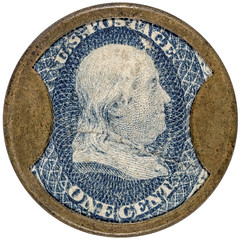
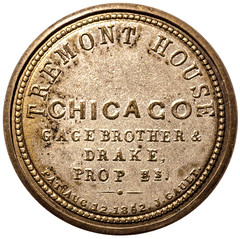
EP-15, HB-120, S-88, Reed-TH01. One Cent. GAGE BROTHERS & DRAKE, Tremont House. Chicago. Original Silvering. Choice About New.
Rated as Rarity-8 (5 to 10 known) according to Fred Reed. This is a very important rarity towards the full completion of a Encased Postage Stamp collection. The 1863 issue Benjamin Franklin stamp is perfectly centered and retains its full original bold blue appearance, with a light natural paper placement wrinkle running under the neck. The mica is crystal clean and near perfect. The case is a lovely chestnut in color having a little sign of actual circulation and having lots of its bright original Silvering upon the central reverse. All details of the legends are very clear. This EP number is rarely ever encountered. The past EP-15 we have sold were in our EAHA Sale, February 10, 2007, Lot 777, also graded About New, selling at $6,195 while the latest was in April 2011, Lot 231, in quite similar quality, selling for $6,490. A highly significant Encased Postage Stamp rarity in impressive quality. Noted upon an accompanying insert as being Ex: Richard Wolfer’s Sale #135, April 1986, lot 3937.
To read the complete lot description, see:
Outstanding One Cent “Gage Brothers & Drake”
Rarity-8 (www.earlyamerican.com/Auctions/ClientPages/lots.item.php?auction=18&lot=2239)
Lot 2026: Lincoln Bas Relief Cast Metal Portrait Plaque
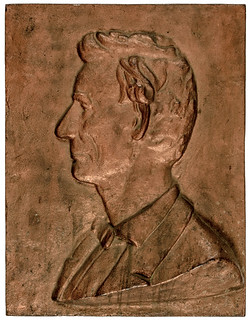
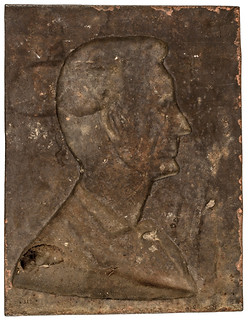
Abraham Lincoln Bas Relief Cast Metal Portrait Plaque from an Illinois Municipal Courthouse Building Cornerstone Display.
Exceptional Abraham Lincoln Bas (High) Relief Portrait Plaque in Cast Metal. The shoulders up image shows Lincoln facing left. Most certainly this was produced for being inset on display for a building entry or cornerstone. This 22” x 16” is most impressive. It weighs about 30 pounds or so and has a very high relief which varies, yet measures almost 2” high at Lincoln’s shoulder. A Lincoln portrait this large in size appears meant to be viewed from a distance. It is the largest such Lincoln cast we have offered. Certainly a remarkable “Key” central bronze image for any Abraham Lincoln collector or institutional display. Said by the consignor to have originally come from the renovation of an Illinois Municipal Courthouse Building or Cornerstone display, commemorating where Lincoln had once practiced law. Obviously a very special order and as for a new home it would be perfect for any bank, financial institution, or law office.
To read the complete lot description, see:
Massive Abraham Lincoln Bas Relief Cast
Building Display (www.earlyamerican.com/Auctions/ClientPages/lots.item.php?auction=18&lot=2026)
HOW LOVE TOKEN ENGRAVING STYLES CHANGED
Carol Bastable is the President and webmaster of the Love Token Society and also writes for the society's newsletter, Love letter. She writes:
I recently researched a Victorian period book on engraving and discovered some information. It confirmed some of my previous research on love token initials which had been based on observations over time and population studies.
 It has been mentioned previously in the Love Letter that love tokens with initials underwent design changes in their later years of
production. The information was arrived at by studying thousands of love tokens over time and finding a correlation between the date on the coin and
the style of design that was engraved. Now, conclusive printed proof on the matter has been found.
It has been mentioned previously in the Love Letter that love tokens with initials underwent design changes in their later years of
production. The information was arrived at by studying thousands of love tokens over time and finding a correlation between the date on the coin and
the style of design that was engraved. Now, conclusive printed proof on the matter has been found.
I recently saw an antique engraving book on eBay and thought how interesting it would be to read and research its history, so I purchased it. The book “Modern Letter Engraving” was written by Fred Holmes Rees. and published in 1898.
A number of the early chapters take the reader through engraving the same script font, letter by letter, in both upper and lower case, and address spacing between letters. There was one page on flourish design which followed the chapters on individual letter engraving. “Flourishes” are the squiggle lines that are used to decorate outside of the letters and give a decorative effect to the background area.
 In chapter 15 the author mentions that only a few years prior (keep in mind the 1898 publication date), engravers placed articles to be
engraved on sand bags to hold them or even held an item in one hand and the engraving tools in the other hand. He then informs the reader of new
devices including the Monarch engraving block, which resembles a modern engraving ball used today. The latter half of the book discusses engraving
Roman, Old English, Gothic, and block letters. It is mentioned that Old English is the second favorite style, with script being number one in
popularity. Old English was said to be plain enough to be readable yet at the same time very ornamental.
In chapter 15 the author mentions that only a few years prior (keep in mind the 1898 publication date), engravers placed articles to be
engraved on sand bags to hold them or even held an item in one hand and the engraving tools in the other hand. He then informs the reader of new
devices including the Monarch engraving block, which resembles a modern engraving ball used today. The latter half of the book discusses engraving
Roman, Old English, Gothic, and block letters. It is mentioned that Old English is the second favorite style, with script being number one in
popularity. Old English was said to be plain enough to be readable yet at the same time very ornamental.
There are several pictures of highly ornate ciphers and monograms shown in the last five chapters of the book. Some are akin to love token design and some are possibly even more ornate than what is seen on love tokens. Chapter 29 covers block letter monograms. These are what love token collectors have been calling double and triple overlapping letters. Perhaps we should adjust our term and embrace the correct one as written in the book, “block monograms”. That being said, much of what we have been calling monograms (made using overlapping script letters) are also referred to a little differently with the words “cipher” and “script monograms”.
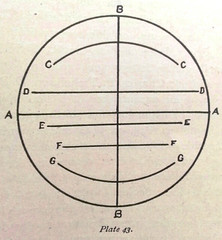 What is of interest in the block letter monogram chapter is what the author says about them: “Fancy block monograms are not as commonly
used now as they were a few years ago, but we should know how to engrave them.” Remember the book was printed in 1898, and it confirms that this
style of monogram was on the way out and being replaced by script monograms. The book includes the picture of a circular grid that was used in the
making of block monograms.
What is of interest in the block letter monogram chapter is what the author says about them: “Fancy block monograms are not as commonly
used now as they were a few years ago, but we should know how to engrave them.” Remember the book was printed in 1898, and it confirms that this
style of monogram was on the way out and being replaced by script monograms. The book includes the picture of a circular grid that was used in the
making of block monograms.
All in all, the book was interesting and it really gives a love token collector an appreciation for all the work that goes into designing and engraving a monogram. I was hoping for even more clues to love tokens and found myself quickly skimming though the sections on how to engrave individual letters A-Z. The idea of searching for and reading old engraving books is an interesting prospect. Next time maybe a book published in the late 1870’s or early 1880’s, provided one exists, would be even more fruitful.
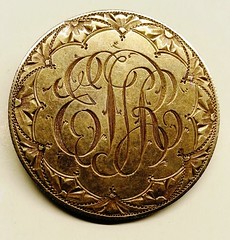
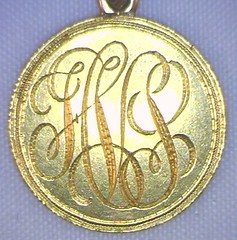
Script Style Cipher Love Token Designs on a Peace Dollar and Quarter Eagle
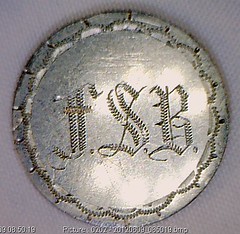
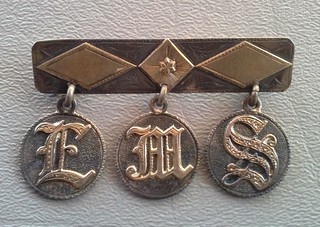
Old English Love Tokens Designs on a Shield Nickel and Dimes (Gold Overlay)
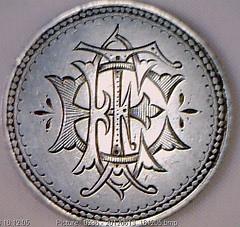

Block Letter Love Token Designs on a Bust Half and Liberty Nickel
Carol adds:
A cipher does not overlap as fully as a monogram. The block letters are stacked one on top of another and in the cipher, one can place the order as two letters appear just left and right of the center one. Victorian block letters are far more ornate than what we think of today as block letters.
To read the book on Google Books, see:
Modern letter engraving in theory and
practice (https://books.google.com/books?id=0x8PAQAAMAAJ&printsec=frontcover#v=onepage&q&f=false
For more information on the Love Token Society, see:
http://lovetokensociety.com/
HAS LEGENDARY NAZI GHOST TRAIN BEEN FOUND?
Could two treasure hunters have found a legendary Nazi train packed with gold that vanished 70 years ago?
It's a question authorities in Poland's mountainous southwestern Walbrzych district are taking seriously.
It seems on its face unlikely. But not impossible.
The train reputedly went missing in 1945, at the end of World War II, when the Soviet Red Army was closing in on the forces of Nazi Germany.
As local lore has it, the train left Wroclaw, then part of Germany and known as Breslau, for Walbrzych, but never reached its destination.
Now two people, a German and a Pole, say they have found a 490-foot (150-meter) train they claim contains Nazi treasure that could be worth "well over a million dollars," said Marika Tokarska, an official at the Walbrzych district council.
Through a local law firm, they contacted the Walbrzych district council a week ago with news of their find.
But they won't reveal the train's location without a guarantee that they will be awarded 10% of the value of the treasure, she told CNN.
As a military train, it could contain weapons, possibly including unexploded bombs. And local authorities say it could be carrying early Nazi research into nuclear technology, Tokarska said.
To add to the danger, if the train is sealed in an underground tunnel, methane could have built up, creating the risk of an explosion if it is disturbed by excavators, she said.
Once authorities know the location, they will secure it and make sure investigations are carried out as safely as possible, said Tokarska.
If the treasure hunters' claim proves true, it will lay to rest rumors stretching back decades, according to Polish media.
And if they get the 10% share they have demanded, they stand to profit handsomely.
Local media outlets are reporting that the train could hold up to 300 tons of gold, Tokarska said.
To read the complete article, see:
Have treasure hunters found missing Nazi train stuffed with
gold? (www.cnn.com/2015/08/20/europe/poland-nazi-train-mystery/)
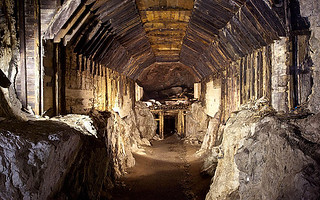 Mr Marciniak, like many others, is quick to stress everybody has heard stories about the train and its gold before, and how people have
tried and failed in the past to gain their fame and fortune by finding it. What sets this time apart from the others, he pointed out, is that the two
claimants have taken a legal step by filing a claim with the local authorities in Walbrzych in the hope of attaining a finder’s fee of 10 per-cent of
the value of the find.
Mr Marciniak, like many others, is quick to stress everybody has heard stories about the train and its gold before, and how people have
tried and failed in the past to gain their fame and fortune by finding it. What sets this time apart from the others, he pointed out, is that the two
claimants have taken a legal step by filing a claim with the local authorities in Walbrzych in the hope of attaining a finder’s fee of 10 per-cent of
the value of the find.
This is a measure nobody before has taken, and has fuelled speculation that this time somebody may have actually found something.
But just where the train might have been found remains unknown. The two who have claimed to have found it have kept the location under wraps, saying, through their lawyer, that they may reveal their secret to the president of Walbrzych next week. But until then the location stays secret.
The local press have claimed one place the train could lie is the village of Walim. Stretched along a valley some 12 miles west of Walbrzych and overlooked by the forested Owl Mountains, Walim has emerged as a contender for the location because its hills are home to some of the Project Riese tunnels.
One of the biggest construction projects in the history of the Third Reich, Project Riese involved digging miles of tunnels in a series of complexes across the Walbrzych region, which was until 1945 part of Germany. Thousands of slave labourers died hewing the rock for reasons that still remain unclear. Some say the tunnels were for a secret command centre, others claim they were for underground factories for Hitler’s secret weapons, or even hid research on an atomic bomb.
To this day not all the tunnels have been explored so believers in the gold train legend say the locomotive and its cargo may still lie hidden in a secret siding.
Further up the valley at the entrance to Walim’s Reise tunnels, now a tourist attraction, Marcin Pasek, shakes his head at talk of finding the gold train. A tunnel guide for five years he has heard the legend many times and it still fails to ring true for him.
“I have my reservations about this,” he said with a slight laugh. “There has been talk but no evidence. Maybe there was some treasure but why leave it on a train? In the past Nazi loot has always been found in boxes: never on a train. Or maybe somebody has found a train, but perhaps it’s just an old abandoned train with no treasure.”
To read the complete article, see:
On the hunt for the Nazi gold train: Inside the Polish tunnels that may hold the bullion
(www.telegraph.co.uk/news/worldnews/11818136/On-the-hunt-for-the-Nazi-gold-train-Inside-the-Polish-tunnels-that-may-hold-the-bullion.html)
THE BOOK BAZARRE
NUMISMATIC MENTORS
David Schenkman's Mentors: Ernest Seneca and James Ruehrmund
When you asked me about my early numismatic mentors, two names came to mind. One, Ernest M. Seneca, was a vest pocket dealer who attended the major auctions and bought high grade early U.S. coins for resale. He would let me purchase coins on time, which was important for a young collector on a limited budget. He sold me things like a complete uncirculated set of capped bust half dimes and a high grade 1795 silver dollar. More importantly was the fact that he took time to teach me the value of really looking at a coin, not so much for its technical grade, but for its aesthetics.
The second edition of my catalog of Virginia tokens is being printed, and it is dedicated to the other person. I wrote
“This book is dedicated to James C. Ruehrmund who, while a naval officer living in Norfolk, allowed this young and very inquisitive collector to spend numerous hours studying the vast and diverse array of numismatic items in his coin cabinet. The time he took to patiently answer what he must have thought to be a never-ending barrage of questions made me aware that there was much more to the hobby than just U.S. coins. Those visits were, in large part, the foundation for my lifelong interest in numismatics. Thanks, Jim.”
Hopefully I’ll see Jim next month at the Virginia Numismatic Association’s convention, where the book is slated for release.
Eric Schena's Mentors: Gene Brandenburg and David Schenkman
I have been in numismatics ever since I was four years old. I have been especially fortunate in that I have had some outstanding mentors throughout much of that time. When my family moved to Northern Virginia in 1984, I met Gene Brandenburg at his shop at 211 King Street in Alexandria and quickly became a regular. He took me under his wing and I learned an enormous amount about the coin business and, rather importantly, awoke a passion in me to research the less traveled paths in numismatics.
At the time, Gorbachev and glastnost helped to open new avenues of research regarding early and medieval Russian coins and thanks to Gene I was able to start assembling a nice collection of "wire" coins. I also took an interest in ancient coins and in particular the mysterious coins of ancient and medieval Central Asia. When I started to work part time for Gene, he helped me learn how to attribute the coins with barely any starting information. I cut my teeth on these coins using Michael Mitchiner's Oriental Coins and Their Values (which he recently gave to me) and enjoyed every minute of it.
In college in the early 1990s, I minored in Russian Studies (though when I started it was called Soviet Studies) and used my interest in wire coins to write my senior thesis on them. His location in Alexandria also meant a number of great local items came through his shop and with one obsolete note in particular, a 12 1/2 cent note from A. Henkel & Son, I began my journey into the world of tokens and paper money of the Mid Atlantic.
He also introduced me to Nummis Nova and the tremendous fun of that as well as another person whom I consider one of my most influential mentors as well as great friend, Dave Schenkman.
I am forever grateful to Gene for taking the time to mentor me into what has proven to be an essential part of my life. I'm a firm believer in the power of mentoring and that it really never ends. Gene and Dave have really helped to hone my researching skills and keep my passion and interest in numismatics constant and continue to do so. If I become even one-tenth the numismatist they are then I will consider my career a success. I certainly hope to be a mentor myself and help a young numismatist's interests flourish and give back to the hobby that has given so much to me.
As we can see from the above progression, one kind act of mentorship can echo through generations. In my case, it was William W. Woodside who mentored Glenn A. Mooney, and Glenn mentored me. I've paid it forward with programs for young numismatists in Pennsylvania and Virginia and like Eric, expect to also mentor some new collectors one-on-one. Let's all do our part to pass along the hobby tradition. -Editor
To read the earlier E-Sylum article, see:
WAYNE’S NUMISMATIC DIARY: AUGUST 16, 2015 : Jeff Starck and Numismatic Mentors
(http://www.coinbooks.org/esylum_v18n33a15.html)
A RUSSIAN ALTERNATIVE CURRENCY
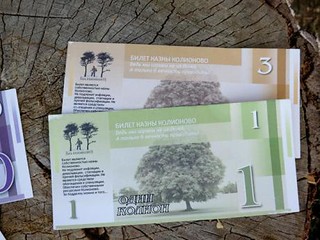 The story of Russian farmer Mikhail Shlyapnikov and his 'self-made' money has become something of a sensation of late, and has long
travelled beyond the confines of Kolionovo, the village where he lives. The Moscow Prosecutor's Office is now investigating Shlyapnikov's
currency (named koliony after his village) and its creator on suspicion of infringing the state's monopoly on issuing currency.
The story of Russian farmer Mikhail Shlyapnikov and his 'self-made' money has become something of a sensation of late, and has long
travelled beyond the confines of Kolionovo, the village where he lives. The Moscow Prosecutor's Office is now investigating Shlyapnikov's
currency (named koliony after his village) and its creator on suspicion of infringing the state's monopoly on issuing currency.
A remote and tiny village, Kolionovo lies at the end of a small road just off a highway leading west out of the Russian capital. And Kolionovo would have remained remote, tiny and unknown, if it wasn't for the periodic scandal about how the village's elderly residents have chased the local administration out of town, the campaign to save the village hospital, the self-organised firefighting service or the ban on public officials entering the village without a document testifying to their mental health and a recent fluorography test for tuberculosis. But now the residents of Kolionovo have devised their own currency and, in doing so, have written themselves into a wider history – a history of alternative currency and anarchism.
With the dubious honour of being Russia's leading anarchist farmer, Mikhail Shlyapnikov was a successful entrepreneur before he moved to Kolionovo.
As Mikhail Shlyapnikov has argued in court and out (he has his own LiveJournal account): 'Koliony aren't even money, they're just IOUs.' In this sense, this farmer-cum-anarchist from outside Moscow has not come up with anything new.
In Debt: The first 5,000 years, David Graeber writes: 'There is an unresolved debate between those who see money as a commodity and those who see it as an IOU. Which one is it? By now, the answer should be obvious: it's both.'
Graeber uses numerous examples to illustrate how traders and artisans in the past issued their own money made from iron, wood and leather. This kind of money circulated in a community of business partners, among consumers of the same institutions, stalls and studios. And as we face a fresh economic crisis, small business owners have returned to these practices.
To read the complete article, see:
Anarchism, Russian-style
(www.opendemocracy.net/od-russia/daniil-dugum/anarchism-russianstyle)
BRITISH MUSEUM: THE HOUSE OF MEMORIES APP
The British Museum is, in part, renowned for objects that are often viewed as the pinnacle of human artistic expression. These objects are made using the finest materials, for or at the behest of the most influential and powerful in society. And yet the Museum is also full of objects that don’t speak of privilege and wealth. They speak of the lives of ordinary people, what they may have worn, what they believed, what they ate and drank from and most interestingly for me, what they used to pay for things.
A few months ago my colleague Mieka Harris (The Citi Money Gallery Education Manager) and I worked on a project with National Museums Liverpool where we were asked to suggest objects from the Coins and Medals collection at the British Museum which could be used in an app. The app was to be produced as part of the House of Memories project which aims to support the carers of people living with dementia. The app, now in its third incarnation, includes objects from National Museums Liverpool, The Cinema Museum in Elephant and Castle, Brighton Pavilion and Museums, Bexley Museum and Heritage Trust and the British Museum.
Our brief was to suggest objects that would have been used in ordinary life. The Coins and Medals collection is perfect for this. The material culture of money not only touches almost everyone in society but can also be very evocative. This fact, when combined with the great variety of objects in the collection, made the decision-making process rather tricky.
 As an example, one group of objects we suggested were co-operative plastic tokens which people used to leave out to pay for deliveries
instead of coins. These small, brightly-coloured plastic discs would be the stuff of everyday life and pass through people’s hands on a daily basis.
Other objects included a leaflet from Camden council explaining how to pay the poll tax, a three-pence coin (threepenny bit), a ten-shilling note
(ten bob), a collection of cardboard toy-money and a National Savings money box. In total we suggested twenty objects, all with associated images and
sounds to give context and encourage discussion between carers and those living with dementia.
As an example, one group of objects we suggested were co-operative plastic tokens which people used to leave out to pay for deliveries
instead of coins. These small, brightly-coloured plastic discs would be the stuff of everyday life and pass through people’s hands on a daily basis.
Other objects included a leaflet from Camden council explaining how to pay the poll tax, a three-pence coin (threepenny bit), a ten-shilling note
(ten bob), a collection of cardboard toy-money and a National Savings money box. In total we suggested twenty objects, all with associated images and
sounds to give context and encourage discussion between carers and those living with dementia.
To read the complete article, see:
House of memories: an app
and the material culture of money
(http://blog.britishmuseum.org/2015/08/17/house-of-memories-an-app-and-the-material-culture-of-money/)
THE BOOK BAZARRE
1820 PATTERN FIVE POUNDS GOLD COIN
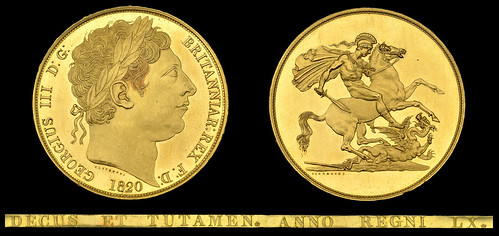
An extremely rare Pattern Five Pounds gold coin which was designed as George III lay dying in 1820 and effectively became a commemorative piece for the king is expected to sell for £200,000 to £250,000 at an auction held by Dix Noonan Webb, the international coins and medals specialists, in London on 16 September 2015. Just 25 of the coins are believed to have been minted some of which were given to museums and institutions while others went to some of the most influential figures of the time. The magnificent coins – the last to bear the head of a monarch who had been on the British throne for 60 years – rarely appear on the market. This example is being sold by a lady collector.
“This coin is something very special,” said Christopher Webb, head of the coins department at Dix Noonan Webb. “It is a wonderful example of the coin engraver’s art. But it also marks the end of the reign of George III which had seen the loss of the American colonies, the French Revolution, the rise and fall of Napoleon and the birth of the Industrial Revolution. Here beauty combines with history.”
This pattern coin – one produced to evaluate a proposed design but not approved for general release – emerged from the relationship between William Wellesley Pole, Master of the Mint from 1814 to 1823, and the Italian Benedetto Pistrucci, his leading engraver, who came to England in 1815. Thomas Wyon junior, the chief engraver at the Mint, died in 1817 but Pistrucci was barred from formally taking over the post because he was a foreigner. Pole got round this rule by leaving the job nominally vacant, paying Pistrucci £500 a year and giving him the use of the chief engraver’s official residence at the Mint. It was an arrangement that caused some resentment.
No large gold coins had been issued for circulation in England since 1754, before George III had come to the throne, and in December 1819, perhaps realising that the king’s health was rapidly declining, Pole instructed Pistrucci to prepare dies. Although workmen at the Royal Mint laboured through the night to finish them in time, the dies were not completed when George III died at Windsor at 8.38pm on 29 January 1820.
With the king dead, the gold coins could not be minted for general circulation. Instead a small number – thought to be 25 although there may have been 26 – were struck effectively as posthumous commemorative pieces. Six went to institutions such as the Royal Mint, the Bank of England and the British Museum while eight were given to Royal Mint officials. The remainder were acquired by influential figures such as the Marquis of Salisbury, and coin collectors such as the south London brewer Robert Barclay and the museum curator Edward Hawkins. It is uncertain as to whether the Marquis of Salisbury received one or two specimens – hence the debate over whether there are 25 or 26 - but it is more probably the former. Whatever the figure the 1820 Pattern Five Pounds remains one of the rarest British coins.
For further information and images please contact:
Dix Noonan Webb
16 Bolton Street,
London W1J 8BQ
Telephone: 020 7016 1700.
E-mail: auctions@dnw.co.uk
To read the complete lot description, see:
www.dnw.co.uk/auctions/catalogue/lot.php?auction_id=338&lot_id=1517
GUY CIFRE AND NUMISTORIA
I have recently started working on an updated list of French stocks and bonds for my French Southeast Asia Coins & Currency catalog. It is going to be a BIG change to what is currently in print about them. I just finished checking my list against the two Guy Cifre catalogs; 3000 Titres Francaise, Repertories Et Cotes and La France D'Outre-Mer, 1500 Titres Repertories Et Cotes in my library. Then I went to Guy's website at www.Numistoria.com to check my list against his inventory. I found about a 10% update, which is significant.
 He started Numistoria back in 1973 and I last corresponded with him probably in the late 1990's so I wrote an email to him about
obtaining his permission again to use the information and images only available from him. To my surprise, I received a response from his wife,
Francoise, approving the use of the information and images as long it is properly credited! She also wrote that he had passed away from cancer in
January 2008 at 63 years of age! Damn! This was news to me and I did an email search and found no obituary for him.
He started Numistoria back in 1973 and I last corresponded with him probably in the late 1990's so I wrote an email to him about
obtaining his permission again to use the information and images only available from him. To my surprise, I received a response from his wife,
Francoise, approving the use of the information and images as long it is properly credited! She also wrote that he had passed away from cancer in
January 2008 at 63 years of age! Damn! This was news to me and I did an email search and found no obituary for him.
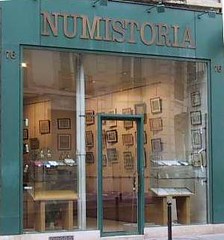 Francoise also wrote that her business is down and she is going to close their shop at 76 rue de Richelieu, F-75002 Paris, France. She is
going to continue the business from an office 45 kilometers from Paris and near where she now lives. The business will only be done now from the
website. She has tens of thousands of stocks and bonds from all over the world, to include many from the United States and the Americas. She can use
some business and I am going to send her an order in the near future. If anyone collects stocks and bonds, please go to the website and make an order
for one or more pieces. Her email address is contact@Numistoria.com .
Francoise also wrote that her business is down and she is going to close their shop at 76 rue de Richelieu, F-75002 Paris, France. She is
going to continue the business from an office 45 kilometers from Paris and near where she now lives. The business will only be done now from the
website. She has tens of thousands of stocks and bonds from all over the world, to include many from the United States and the Americas. She can use
some business and I am going to send her an order in the near future. If anyone collects stocks and bonds, please go to the website and make an order
for one or more pieces. Her email address is contact@Numistoria.com .
PERTH MINT COIN ENGRAVER CLAIRE ROWSON
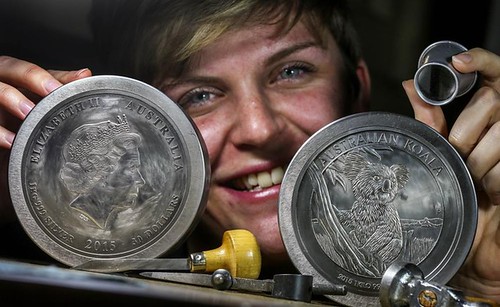
Working with ludicrously expensive items requires a high degree of trust.
And Perth Mint coin engraver Claire Rowson is trusted with hundreds of thousands of dollars worth of precious metals every day.
Every time the 27-year-old walks in and out of her workplace she is subject to airport-style security.
“That was strange at first but I’m used to it now,” she said. “I made a 1kg gold coin for the (Queen’s diamond) jubilee which sold for $162,000. It’s pretty interesting knowing what you’re working with is going to be worth so much.”
Ms Rowson, a fine arts graduate, said no two projects were the same. Her role is to produce commemorative coins using precious metals, rather than the currency coins in daily use.
“Every single job we get we get is different on each stage of the production process,” Ms Rowson said.
“We are given a graphic and draw vectors, then we use software to sculpt in 3D.”
Ms Rowson said though some traditions remained in the industry, new technology had revolutionised her work.
“We can do things to a higher standard in a shorter period of time,” she said.
To read the complete article, see:
()

COINS RETURNING TO ZIMBABWE
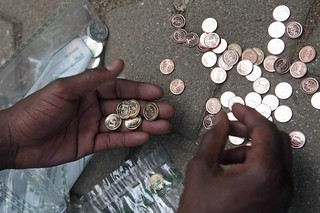 Zimbabweans are reuniting with something they abandoned long ago: coins issued by the state.
Zimbabweans are reuniting with something they abandoned long ago: coins issued by the state.
President Robert Mugabe’s government decommissioned Zimbabwe’s own dollars six years ago, as the country faced a broken local economy and runaway inflation. Since then, consumers have had to use U.S. dollars for larger purchases and rand coins from neighboring South Africa for smaller ones.
Now, a combination of forces is stretching this workaround to a breaking point. Expectations that U.S. interest rates will soon rise, for the first time in years, and economic turmoil in South Africa have widened the gap between the value of the dollar and the rand, which has shed more than 12% of its value against the dollar this year.
In response, Zimbabwe’s government has started minting a small amount of gold- and silver-colored coins. The Reserve Bank of Zimbabwe released $10 million of newly minted coins in December, in denominations equivalent to U.S. pennies, nickels, dimes and quarters.
Many people who lost their life savings in the 2009 currency collapse were initially afraid to use them, but the coins have begun to catch on.
“I still don’t trust those people at the reserve bank or anyone in this government,” said Enniah Muzvande, a hairdresser in Harare, Zimbabwe’s capital, who like many Zimbabweans lost most of her savings when the Zimbabwean dollar collapsed. “But at least the coins are working.”
Merchants are shunning the one- and two-rand coins that used to stand in for dimes and quarters, because their value is slipping so rapidly. Zimbabweans have grown to favor the dollar-backed “bond coins,” which were minted in South Africa and backed by a $50 million bond, over the increasingly cheap South African change.
Some observers think the reintroduction of locally minted coins is a step toward a full-blown effort to launch a new domestic currency, a move they say would be ill-advised.
“I have a sneaking suspicion it was a way to do a toe-test of people’s feeling about introducing a new currency,” said Tapiwa Shamu, a Zimbabwe-born investment banker at Nedbank Group Ltd.in Johannesburg.
But Reserve Bank of Zimbabwe Gov. John Mangudya reiterated that the Zimbabwean dollar won’t return soon. “That is not going to happen,” he said. “Our economy is just not ready.”
To read the complete article, see:
Change Comes to Zimbabwe,
Replacing U.S. Dollars (www.wsj.com/articles/change-comes-to-zimbabwe-replacing-u-s-nickels-and-dimes-1439985310)
COUNTERSTAMPED HALF COMMEMORATES POPE FRANCIS VISIT
Commemorating Visit of Pope Francis to the United States
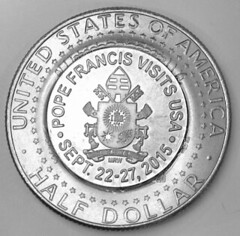 From 1976 through 1984, Mel Wacks designed and counterstamped more than ten thousand coins for over 20 occasions including the Los Angeles
Olympics, Reagan’s Inauguration, Freedom for the American Hostages, Pope John Paul II’s visits to Mexico and the USA, etc. A catalog of these
counterstamped coins was published in the TAMS Journal (March-April 2011) and appears on their web site; and they are sometimes offered for
sale on eBay. Now, for the first time in over 30 years, Wacks is producing new counterstamped coins. These will commemorating Pope Francis’ historic
first trip to the United States from Sept. 22-27, when he will visit Washington DC, New York and Philadelphia.
From 1976 through 1984, Mel Wacks designed and counterstamped more than ten thousand coins for over 20 occasions including the Los Angeles
Olympics, Reagan’s Inauguration, Freedom for the American Hostages, Pope John Paul II’s visits to Mexico and the USA, etc. A catalog of these
counterstamped coins was published in the TAMS Journal (March-April 2011) and appears on their web site; and they are sometimes offered for
sale on eBay. Now, for the first time in over 30 years, Wacks is producing new counterstamped coins. These will commemorating Pope Francis’ historic
first trip to the United States from Sept. 22-27, when he will visit Washington DC, New York and Philadelphia.
In the letter accompanying the first counterstamped coin sent to Pope Francis, Wacks wrote “I have been inspired by your messages in behalf of the earth and the poor. A portion of the profits will be given to an appropriate Catholic charity.”
No more than 500 Brilliant Uncirculated 2015 Kennedy Half Dollars (both “P” and “D”) will be counterstamped with the Coat of Arms of Pope Francis with his personal motto below: Miserando atque eligendo (Latin for "By giving mercy and by choosing”).
Pope Francis’ Coat of Arms displays three emblems. In reference to Francis being a Jesuit, the uppermost emblem--a radiating sun, within which is the IHS christogram (a monogram of the Holy Name of Jesus--is that of the Society of Jesus. Below the Jesuit emblem is an eight-pointed star, which is a long-standing symbol of the Virgin Mary, and a spikenard (or nard flower) representing Saint Joseph. External ornaments include the Papal miter above and the crossed keys of Saint Peter with cords.
The circumferential inscription reads: ‘POPE FRANCIS VISITS USA/SEPT. 22-27, 2015, and Mel Wacks’ initials “MRW” are below the shield. Examples of these limited edition Pope Francis counterstamped Brilliant Uncirculated 2015 Kennedy half dollars are available for $39.50 postpaid from Mel Wacks, 5189 Jeffdale Ave., Woodland Hills, CA 91364 or call 818-225-1348. Mention that you read about it in The E-Sylum and take a 25% discount.
For further information email numismel@aol.com or call (818) 225-1348.
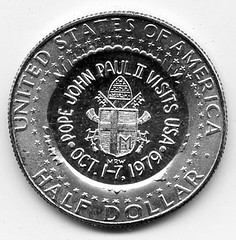 Mel also provided an image of his 1979 counterstamp for the visit of Pope John Paul II. Thanks! -Editor
Mel also provided an image of his 1979 counterstamp for the visit of Pope John Paul II. Thanks! -Editor
To read the earlier E-Sylum articles, see:
MEDAL TO COMMEMORATE POPE FRANCIS' VISIT TO AMERICA
(www.coinbooks.org/esylum_v18n32a26.html)
WAYNE’S NUMISMATIC DIARY: AUGUST 16, 2015
(www.coinbooks.org/esylum_v18n33a15.html)
THAILAND ISSUES NEW 1,000 BAHT BANKNOTE
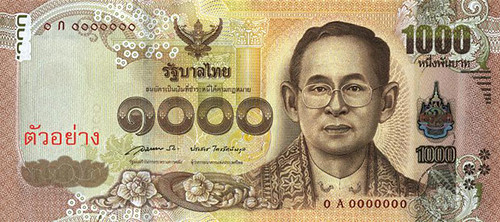
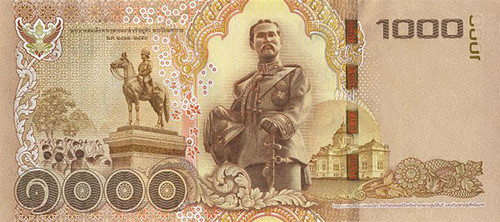
The Bank of Thailand will issue a new 1,000 baht banknote later this week, one that celebrates the many contributions made to the country by King Chulalongkorn, who reigned from 1868-1910.
The first 100 million of the new banknotes will be put into circulation on Friday, central bank governor Prasarn Trairatvorakul said on Monday.
The new note will eventually replace the current note, which has been in circulation for 10 years.
Ms Prasarn said the old design would also remain in use for now. The central bank believed it would take up to two years to completely replace the old 1,000 baht note with the new banknote.
His Majesty the King's face remains on the front of the new note, with king Chulalongkorn, also known as Rama V, on the back.
The new banknote has been enhanced with new security features to deter counterfeiting and facilitate authentication by machine and the public, including the visually impaired.
To read the complete article, see:
New B1,000 banknote in circulation
Friday (www.bangkokpost.com/news/general/658540/new-b1000-banknote-in-circulation-friday)

WOMEN ON U.S. PAPER MONEY: LUCY PICKENS
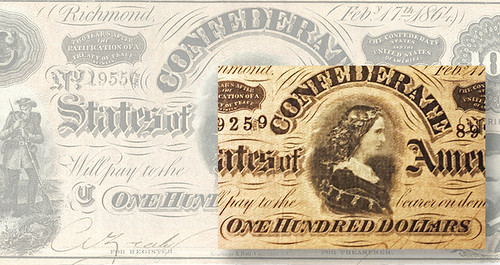
Current news events I mention here likely will have played out by the time you read this. But one seldom mentioned bit of historical news will remain: the appearance of a woman on the Confederate $1 and $100 notes, Lucy Petway Holcombe Pickens, also known as the “Queen of the Confederacy.”
This summer, Jack Lew, secretary of the Treasury, decided it was time for a woman to appear on the $10 bill. So many American women qualified for that honor, including human rights advocate and first lady Eleanor Roosevelt, civil rights hero Rosa Parks, and abolitionist Harriet Tubman.
Nonhobbyists may believe the woman to appear on our $10 bill will be the first in U.S. paper currency history. However, with their love of history, many hobbyists know that Pocahontas appeared on the back of an 1875 $20 national bank note and Martha Washington on the Series 1886 $1 silver certificate.
Lucy Pickens appeared on the Confederate $1 and $100 note in 1862. Pickens was the wife of South Carolina Gov. Francis Wilkinson Pickens, who took office shortly before that state was the first to secede from the Union. He also sanctioned the firing on Fort Sumter in Charleston Harbor in 1861.
Lucy Pickens was said to have watched the bombardment from a rooftop with others.
Before the outbreak of war, she reportedly agreed to marry Francis Pickens only if he became an ambassador. Smitten with her, he lobbied to become U.S. minister to Russia in 1858. There the couple befriended Czar Alexander II and spouse Maria Alexandrovna.
While she became the CSA icon during the war, she rapidly was forgotten in the decades that followed, surpassed by other women who held different beliefs, including the aforementioned Tubman, abolitionist and author Harriet Beecher Stowe, and nurse Clara Barton, one of the founders of the American Red Cross.
This column is not really about Lucy Pickens. Nor is it about the woman on the U.S. $10 note, nor the Confederate flag at the South Carolina Capitol. It is about how our hobby educates us about history, prompting us to research the past by the coins and paper currency that represent it.
To read the complete article, see:
Woman on $10 will launch
currency overhaul (www.usatoday.com/story/news/politics/2015/08/20/woman-10-launch-currency-overhaul/31917533/)
To read the complete article, see:
Lucy Pickens was 'Queen of the
Confederacy': Home Hobbyist (www.coinworld.com/insights/lucy-pickens-queen-of-the-confederacy.all.html#)
SHILLING REWARD FOR OLDEST MESSAGE IN A BOTTLE
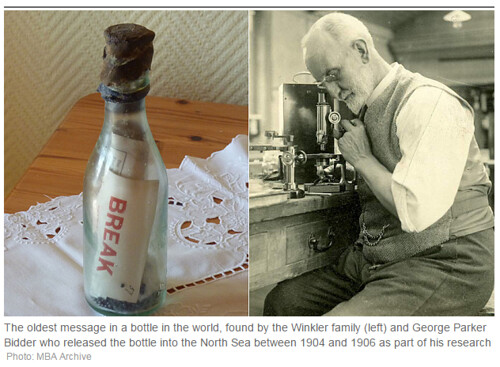
A message in a bottle thrown into the sea 108 years ago by British scientists has been discovered washed up on a beach in Germany.
It is believed to be the oldest message-in-a-bottle ever found.
Marianne Winkler, a retired post office worker, found the message from the past while on holiday with her husband on the North Sea island of Amrum.
“It’s always a joy when some one finds a message-in-a-bottle on the beach,” she told the Amrum News, a local website.
But when Mrs Winkler stumbled on her message-in-a-bottle, she had no idea quite how old it would turn out to be.
Written on a piece of paper inside were the words “Break the bottle”.
“My husband, Horst, carefully tried to get the message out of the bottle, but there was no chance, so we had to do as it said,” Mrs Winkler said.
Inside they found a postcard with no date but a message promising a reward of a shilling to anyone who returned it.
The message, in English, German and Dutch, asked anyone who discovered the bottle to fill in some information on where and how they found it.
The return address was the Marine Biological Association in Plymouth.
“We did as it asked, and the story took its course,” said Mrs Winkler.
The couple sent the postcard to Plymouth in an envelope to avoid it getting damaged in the post.
“It was quite a stir when we opened that envelope, as you can imagine,” Guy Baker, communications director at the Marine Biological Association, said.
But the association made sure of one thing: Mrs Winkler got the shilling reward promised in the note.
“We found an old shilling, I think we got it on eBay,” said Mr Baker. “We sent it to her with a letter saying ‘Thank you’.”
To read the complete article, see:
World's oldest message in a bottle washes up in Germany after 108 years at sea
(www.telegraph.co.uk/news/worldnews/europe/germany/11815044/Worlds-oldest-message-in-a-bottle-washes-up-in-Germany-after-108-years-at-sea.html)
HE SELLS SEYCHELLES BANKNOTE SEX SECRET
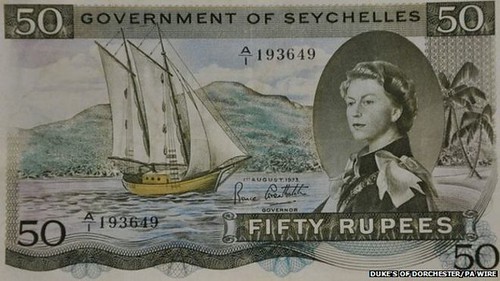
A banknote with the word "sex" secretly written in palm trees is to be sold at auction.
The 50 Rupee Seychelles note is due to be sold at Duke's of Dorchester in October. It was issued between 1968 and 1973 and features an image of the Queen. It has an estimate of £200.
Timothy Medhurst, of Duke's, said it is not known for sure who left the hidden message in the note, but it could have been done by the printers.
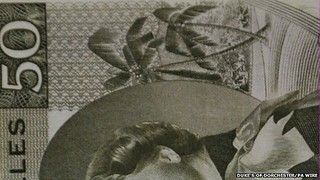 He said some believe the word was added as the Seychelles was trying to gain independence from Britain.
He said some believe the word was added as the Seychelles was trying to gain independence from Britain.
Another note in the series contains the word "scum", suggesting the additions were deliberate.
Fifty Rupees is worth about £2.50 ($3.80).
Mr Medhurst said: "This is a very collectable item for obvious reasons. "Amazingly the added message wasn't noticed, or was perhaps never mentioned, until after it stopped being printed.
"Many think the engraver Brian Fox of Bradbury & Wilkinson, the printers, put it in. "It is an otherwise attractive note but would have disappeared into obscurity if it had not been for its secret message."
To read the complete article, see:
Seychelles 'sex' banknote to be sold at auction
(www.bbc.com/news/uk-england-dorset-33964607)
FEATURED WEB SITE: FEDERAL RESERVE ARCHIVE
This week's Featured Web Site is the Federal Reserve Archive (FRASER), of the Federal Reserve Bank of St. Louis. It was suggested by Andrew Pollack, who writes (via Facebook):It has several titles potentially useful to numismatic researchers. I'm personally downloading many volumes of the Annual Report of the Comptroller of the Currency, which has tremendous data on national banks.
The Federal Reserve Banks opened for business in 1914. This collection includes a timeline, publications, images, and other media that document the history of the Federal Reserve Bank of St. Louis throughout the last century.

https://fraser.stlouisfed.org/
